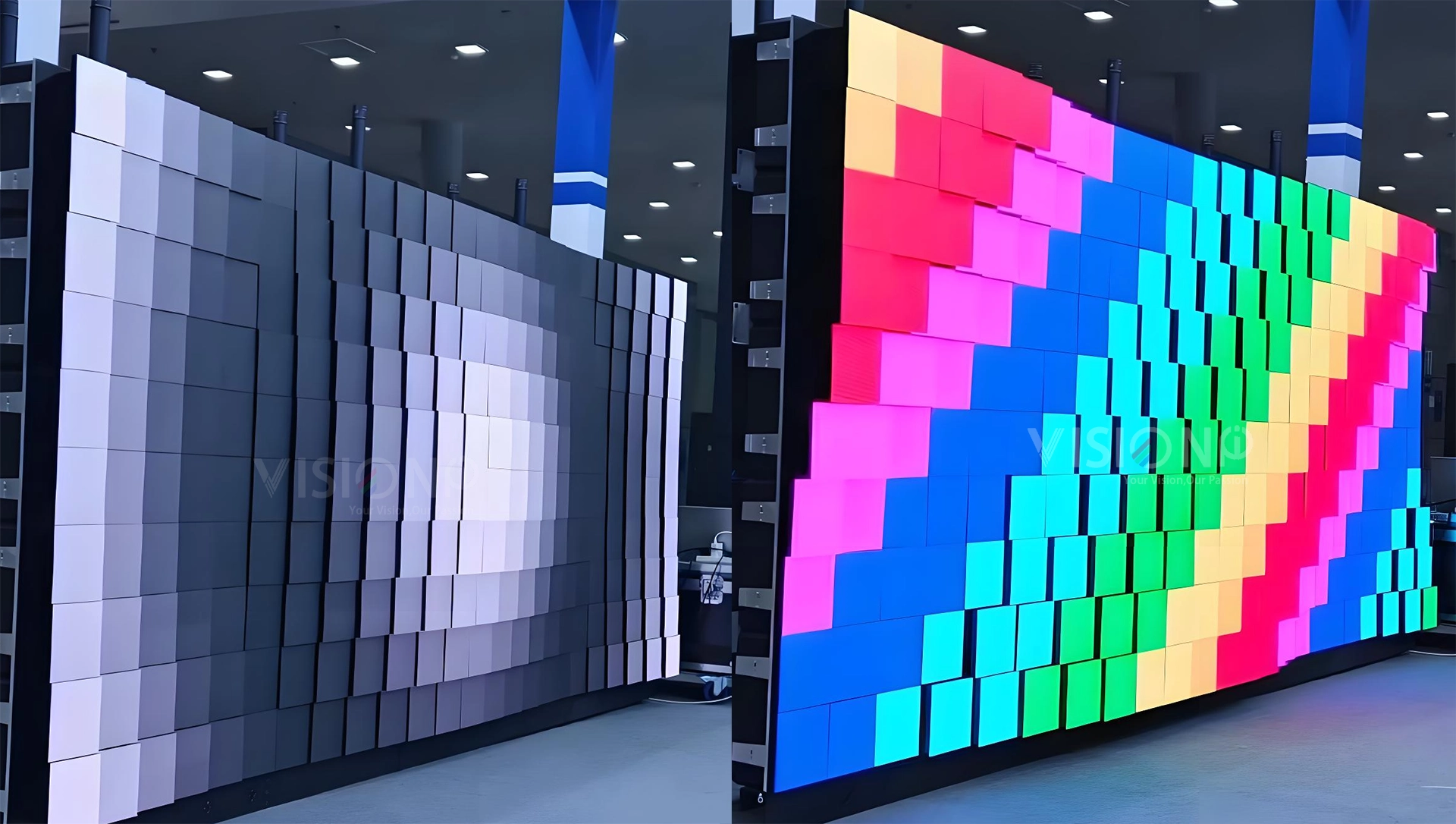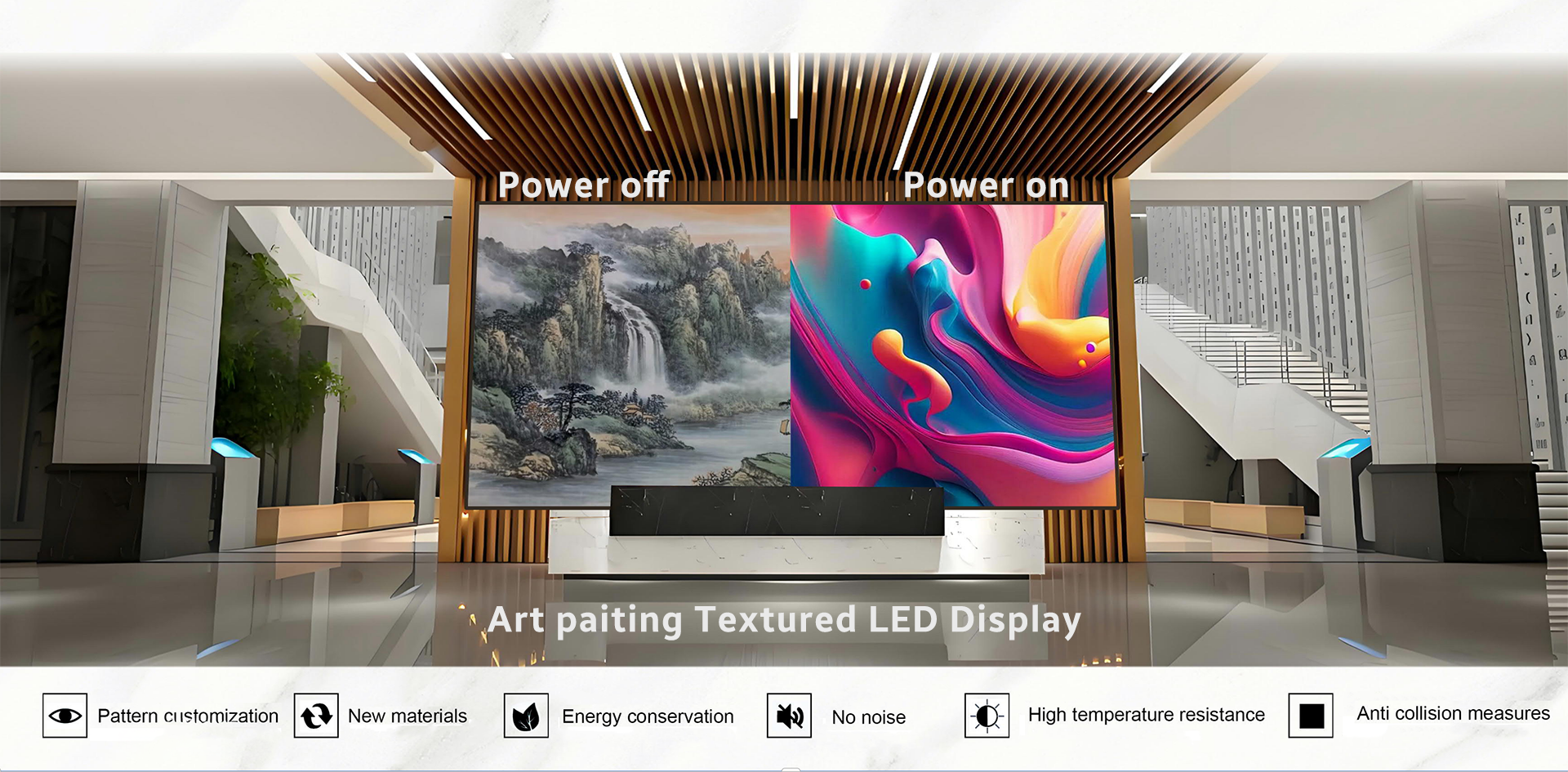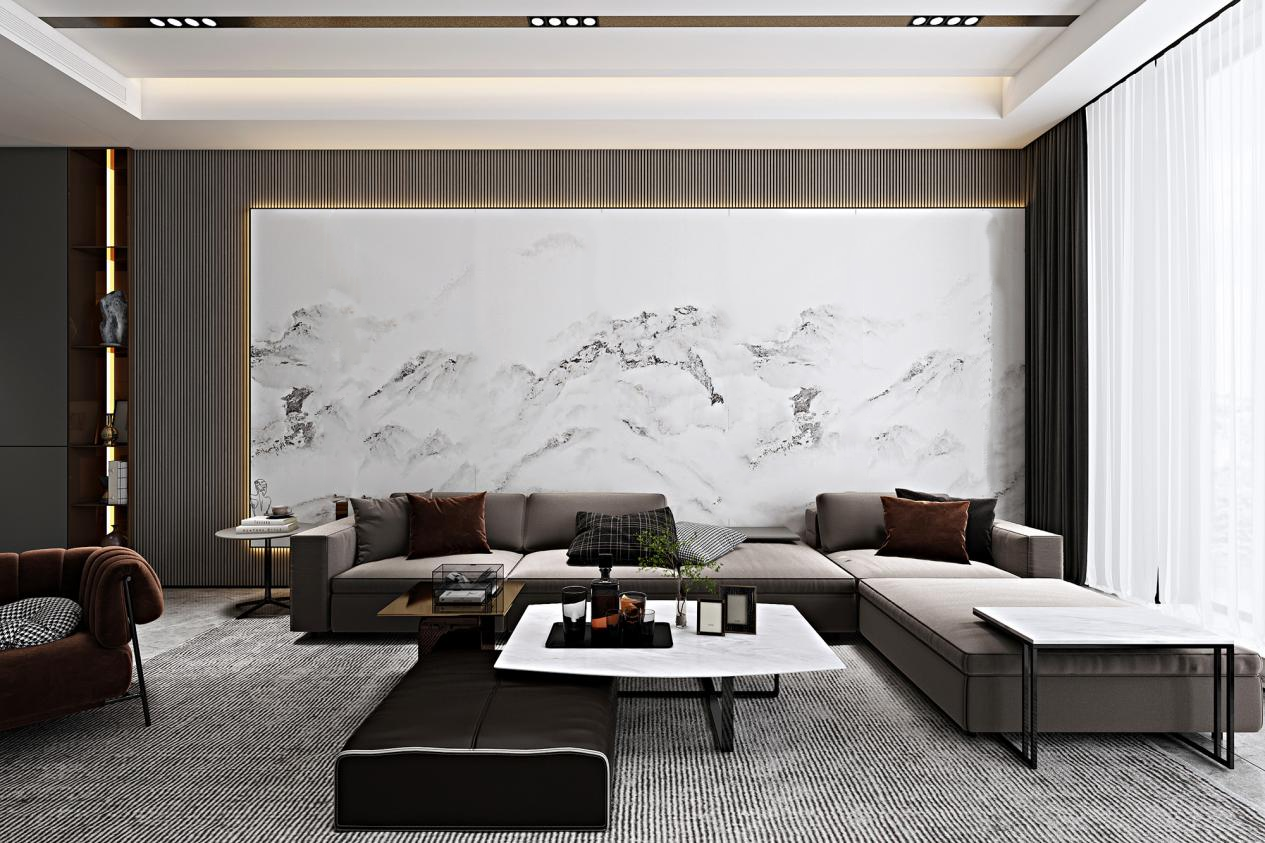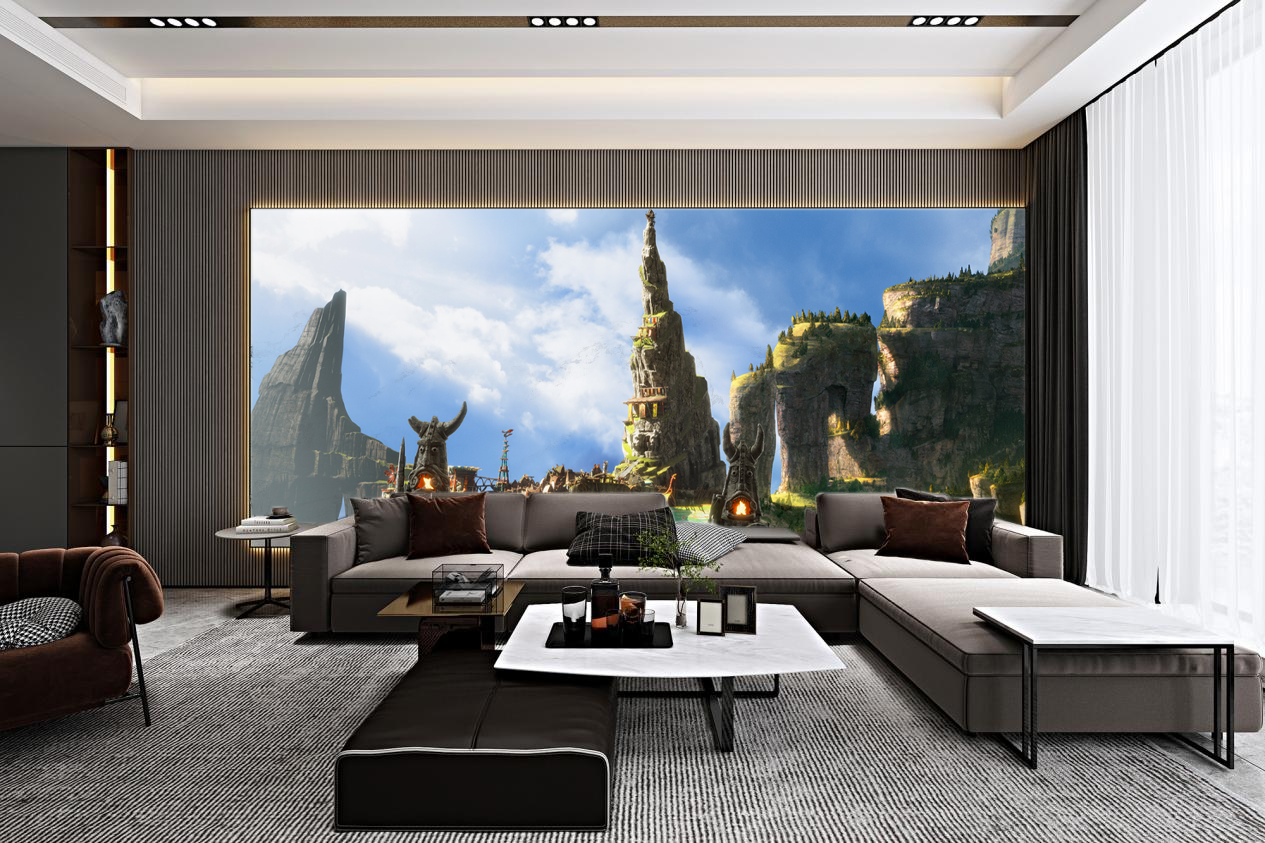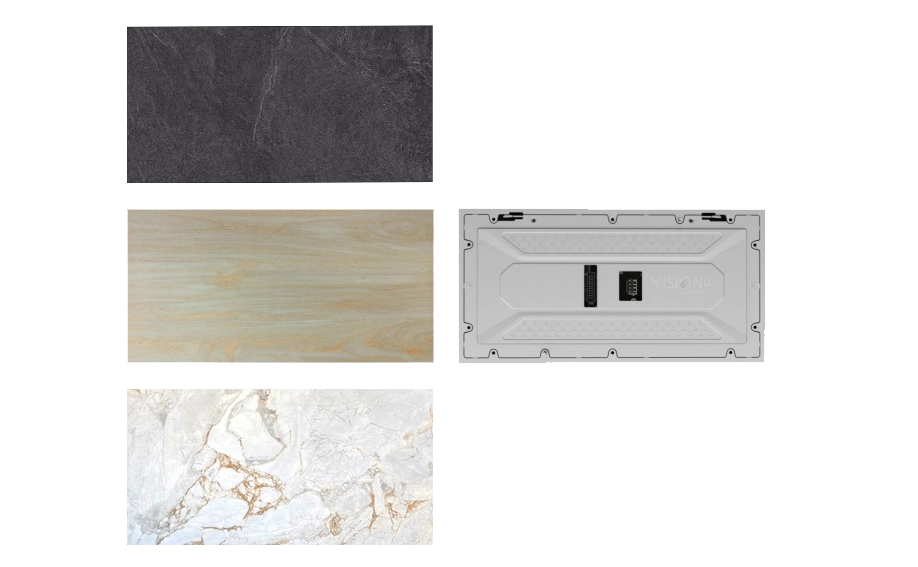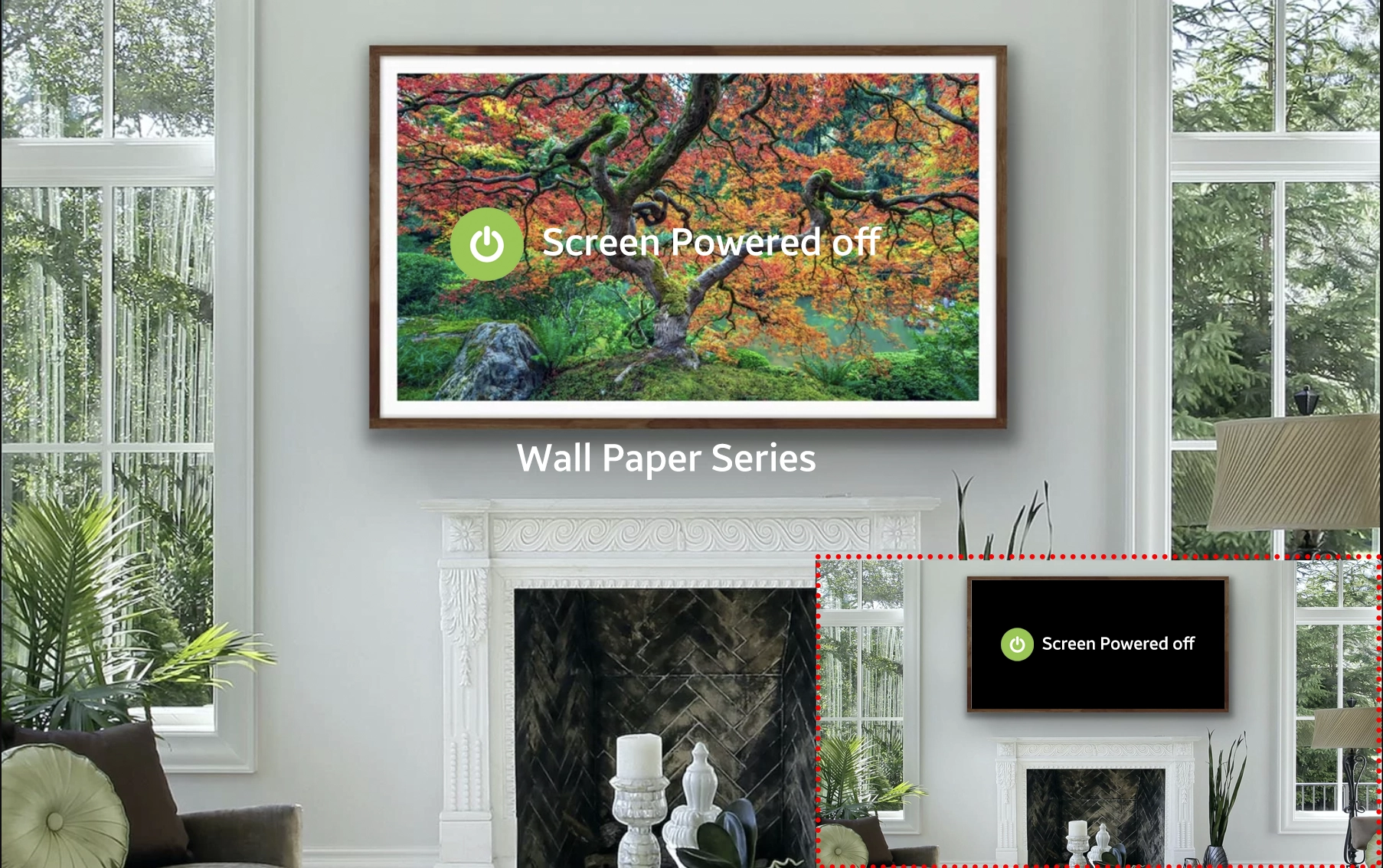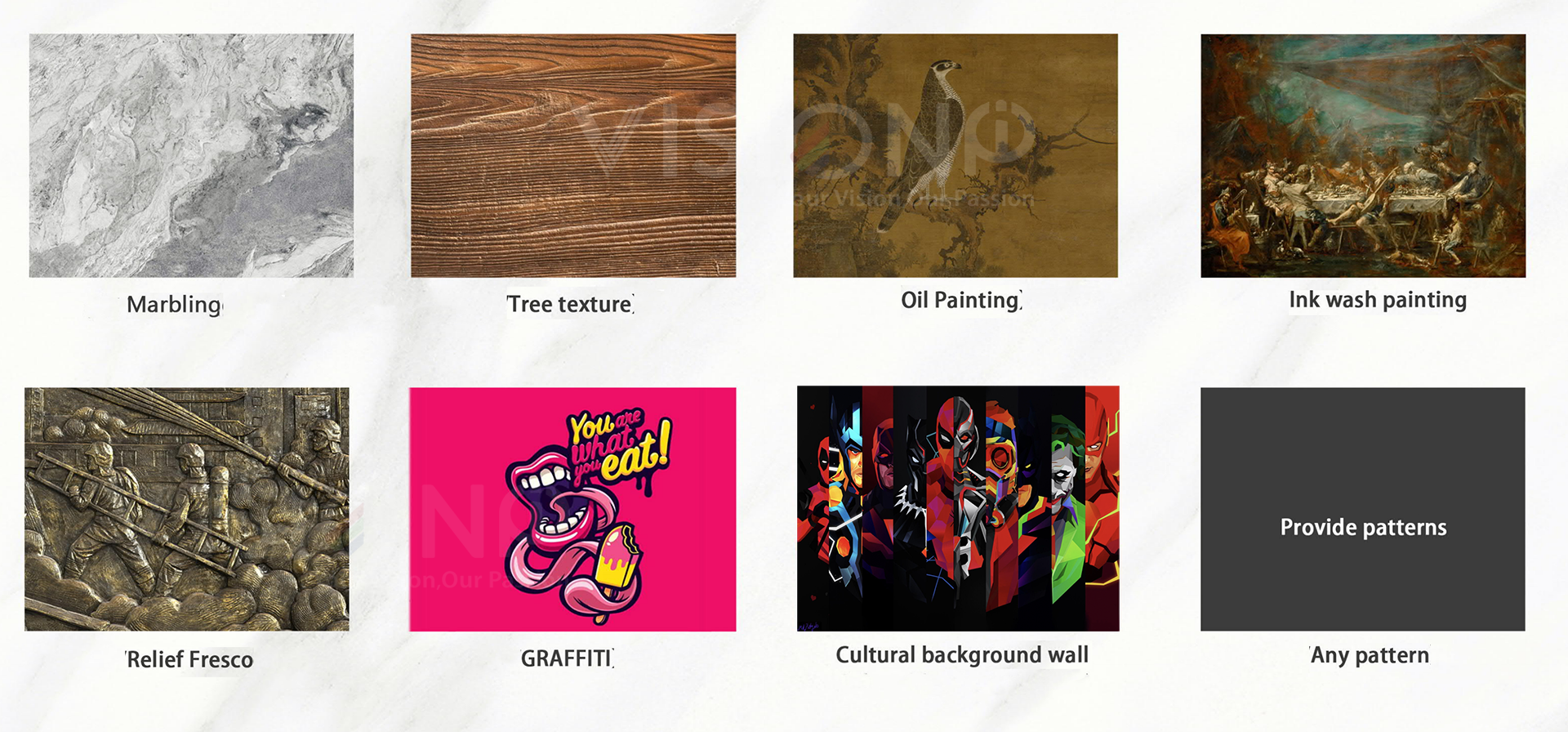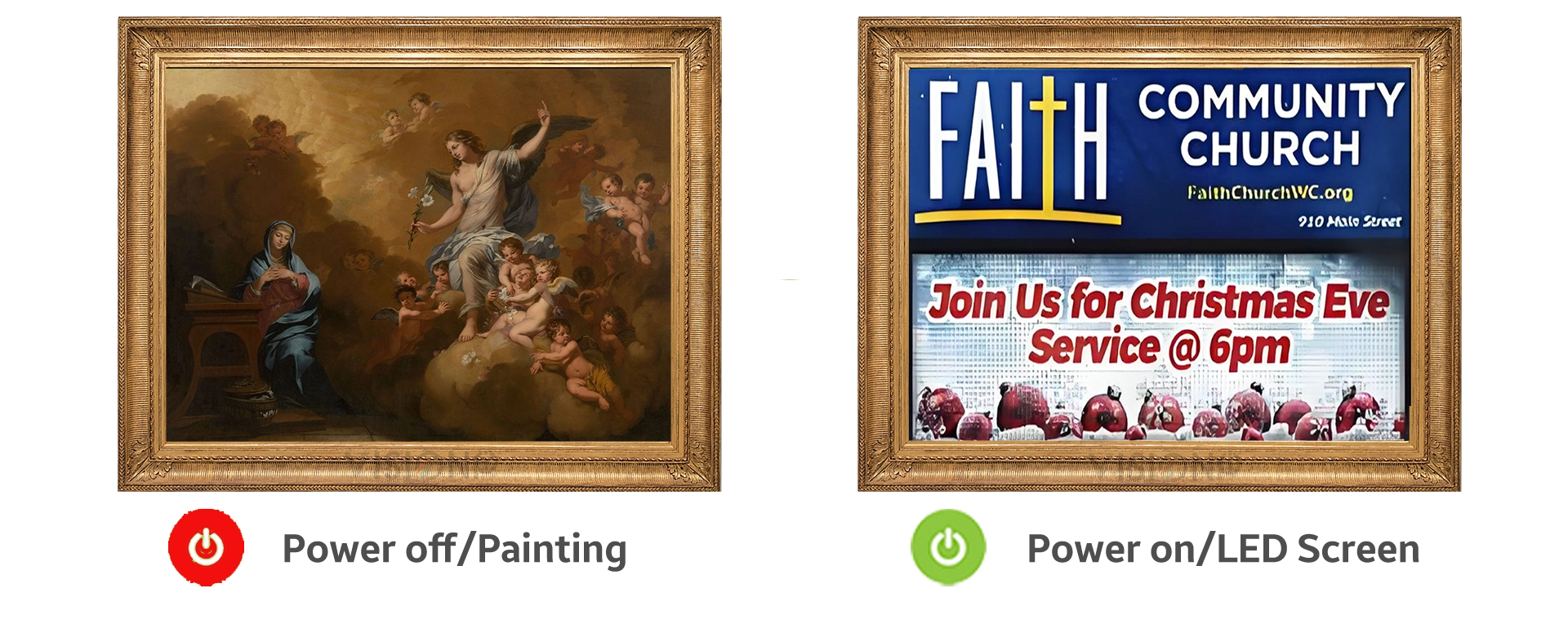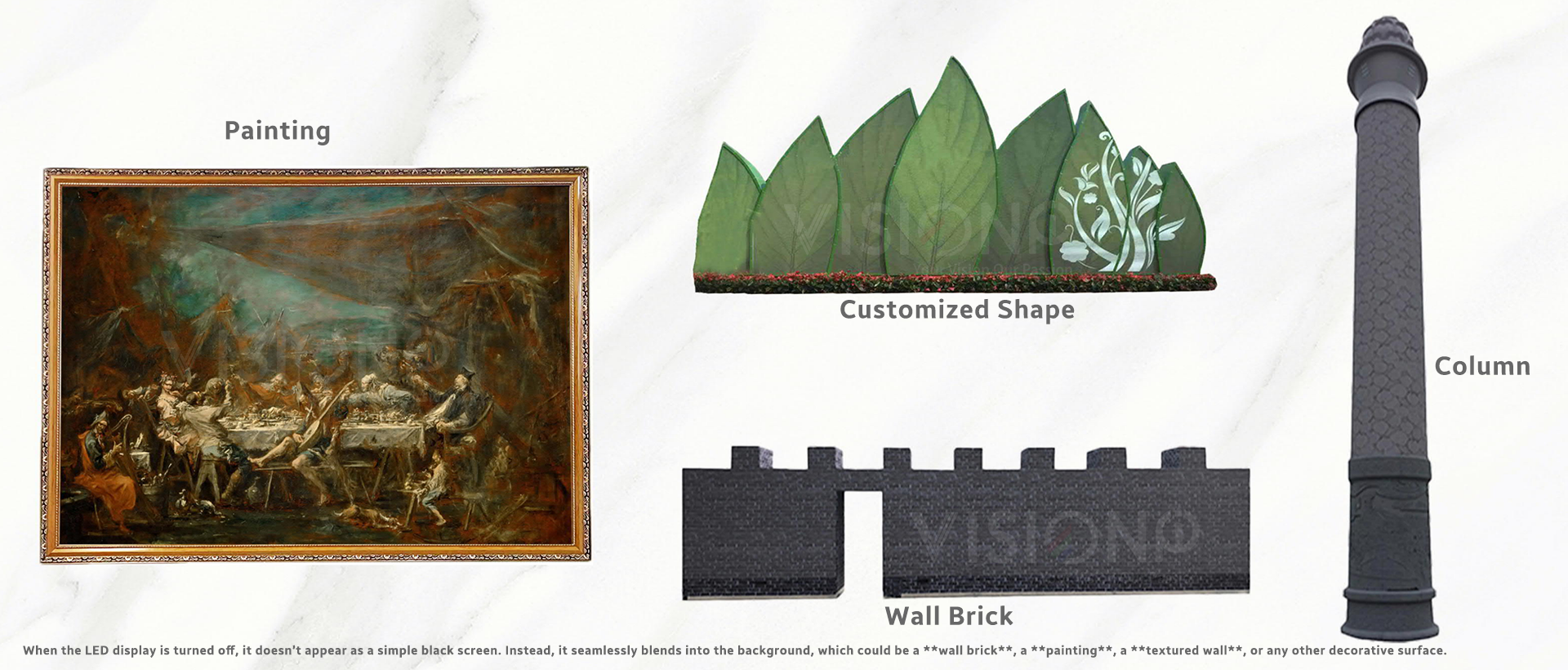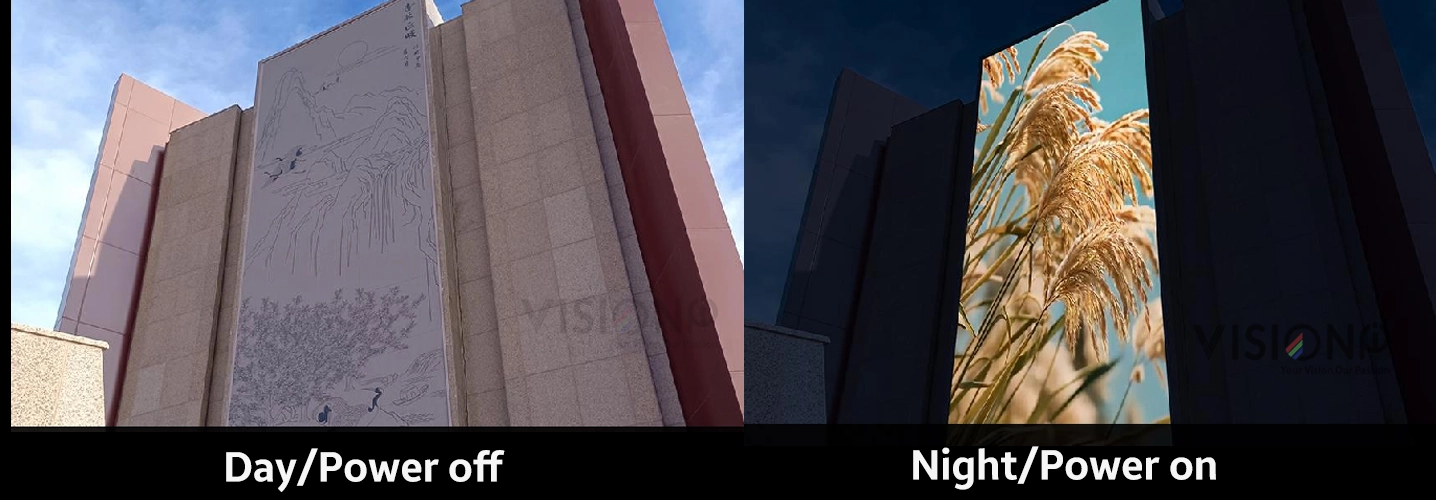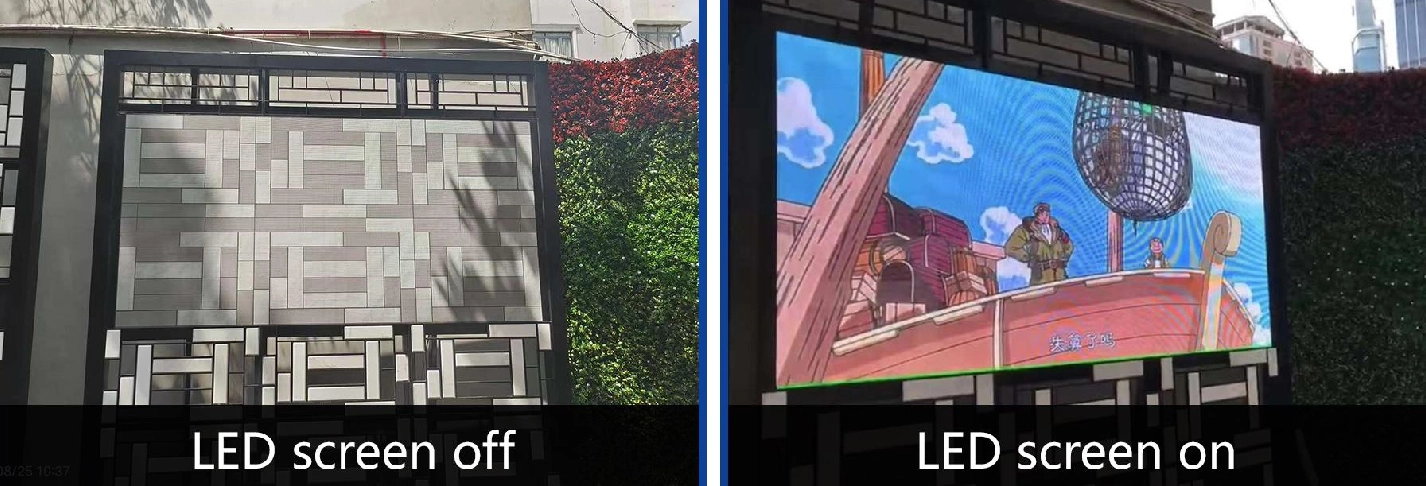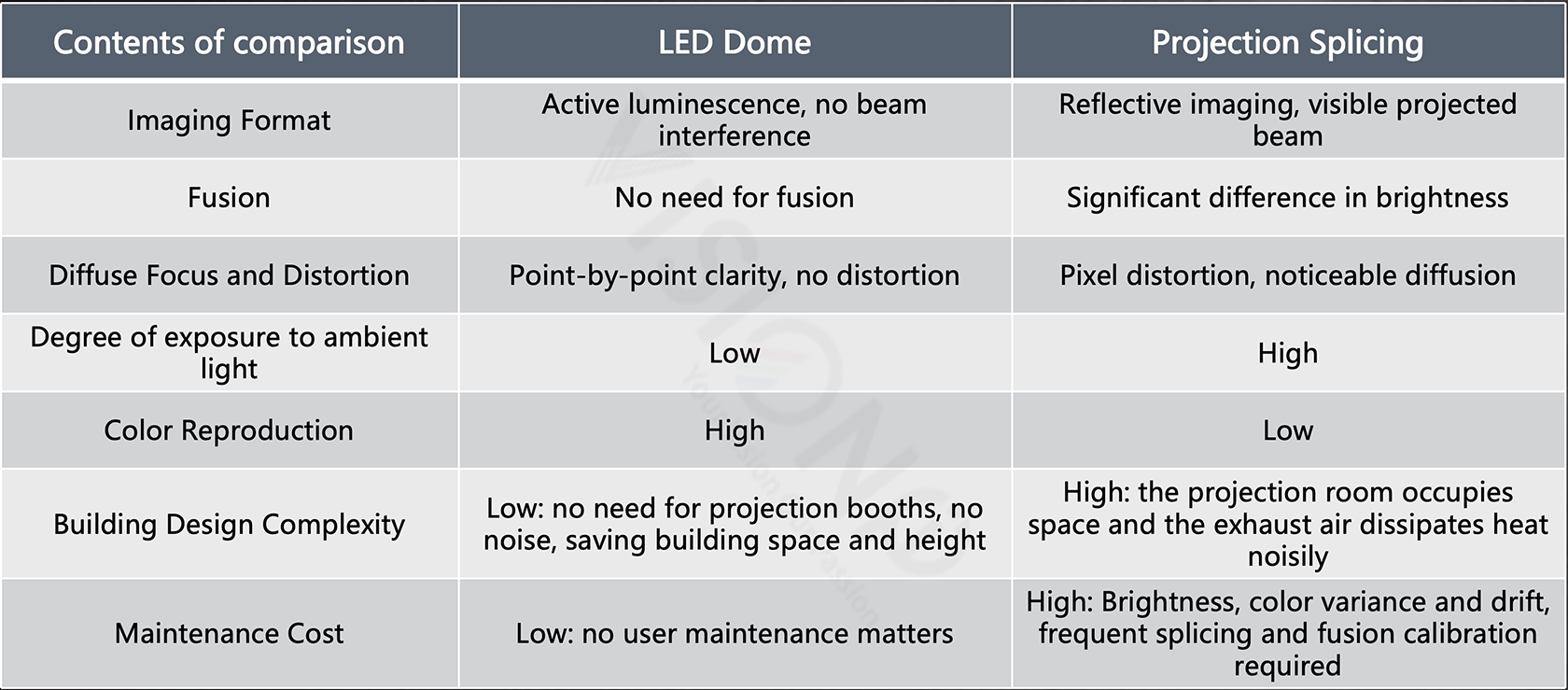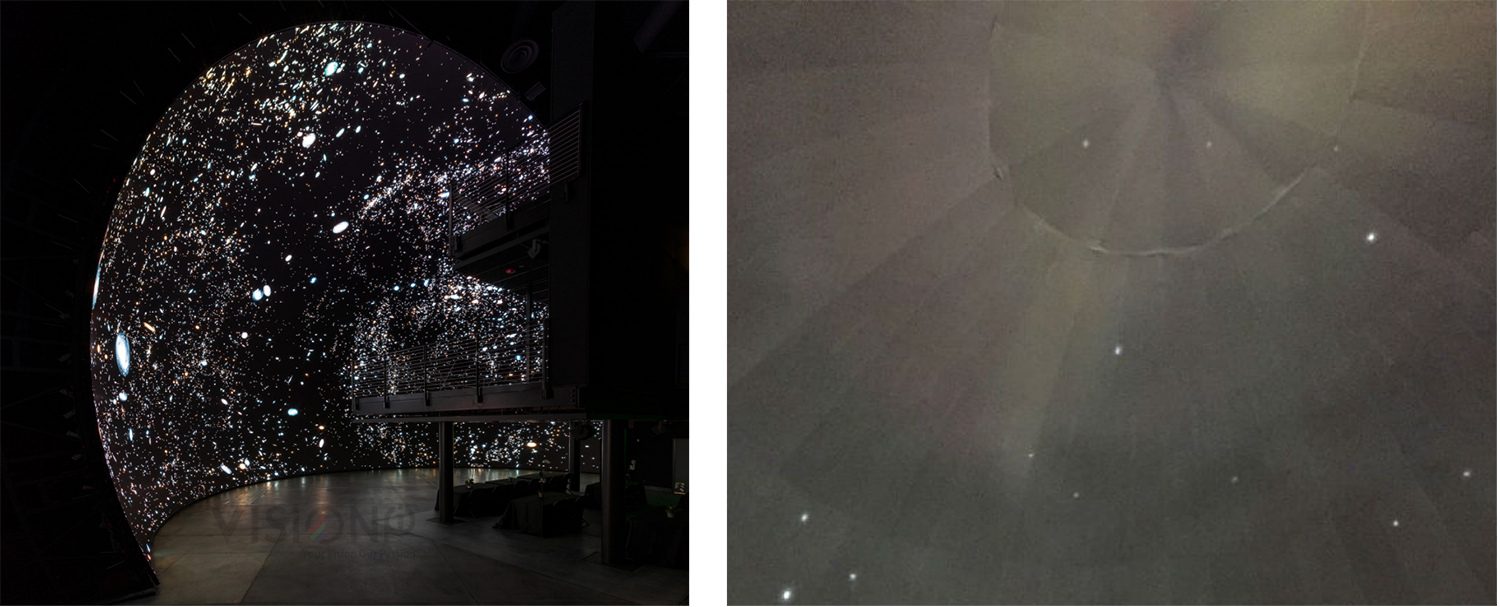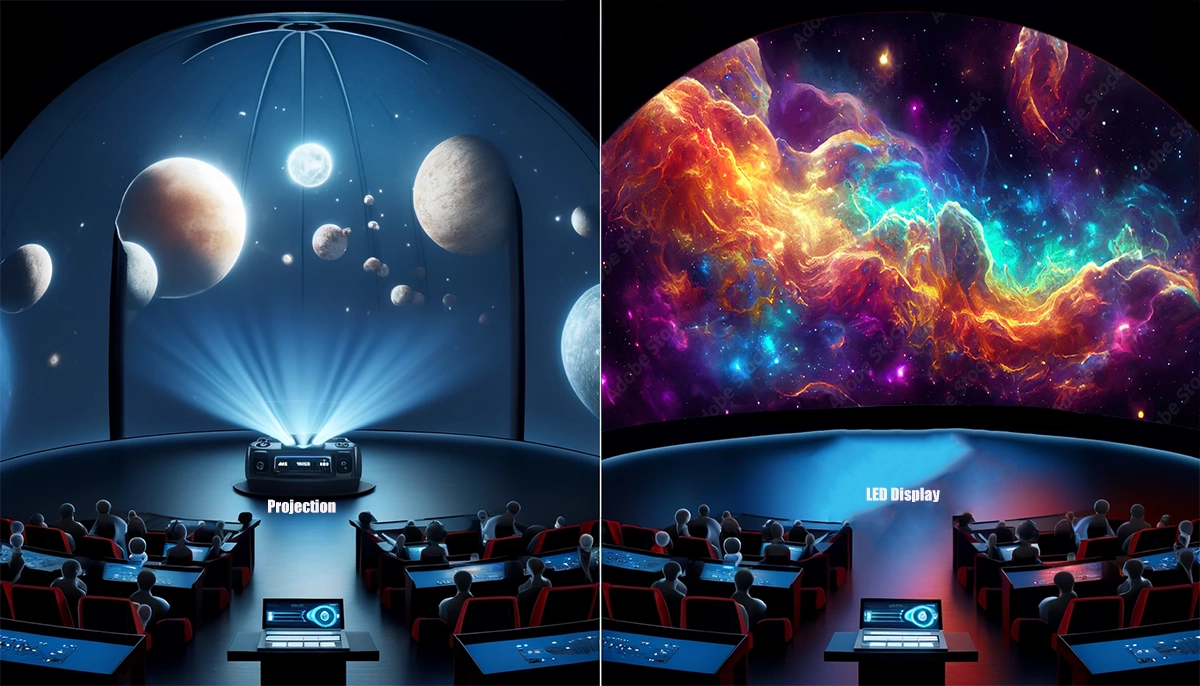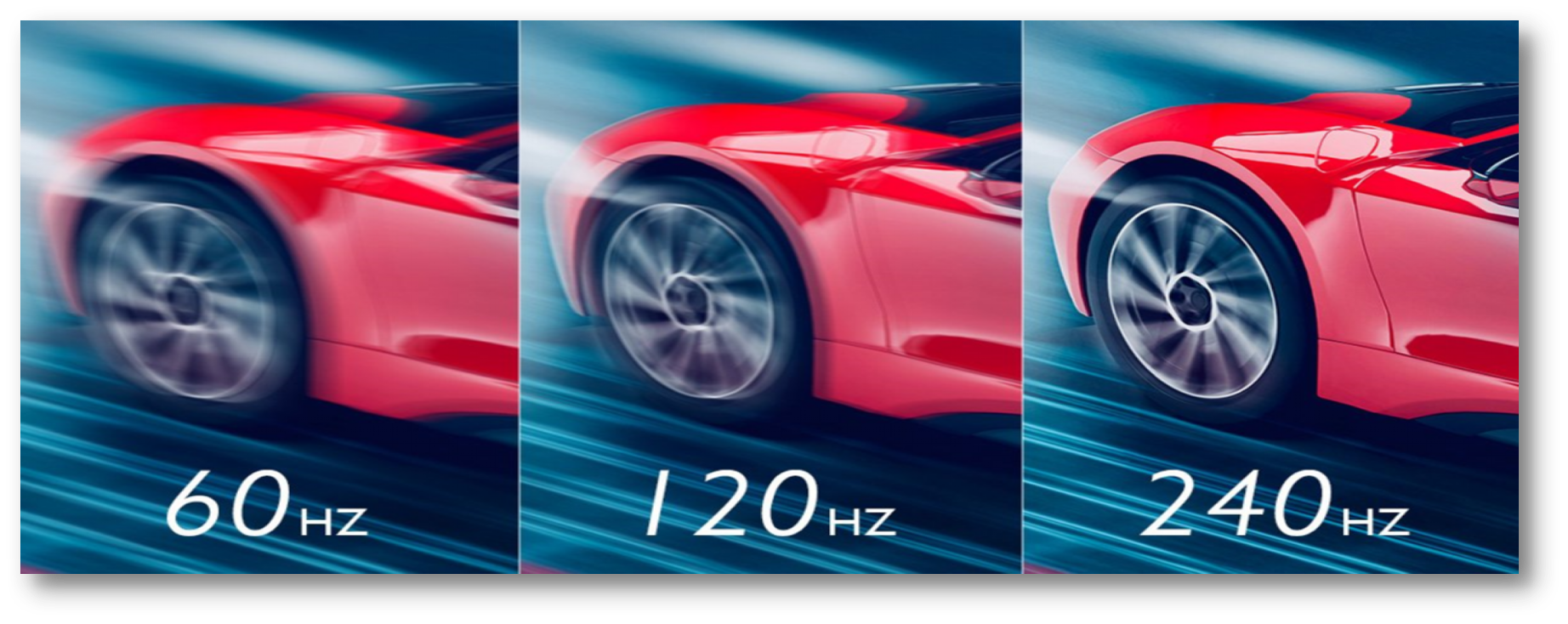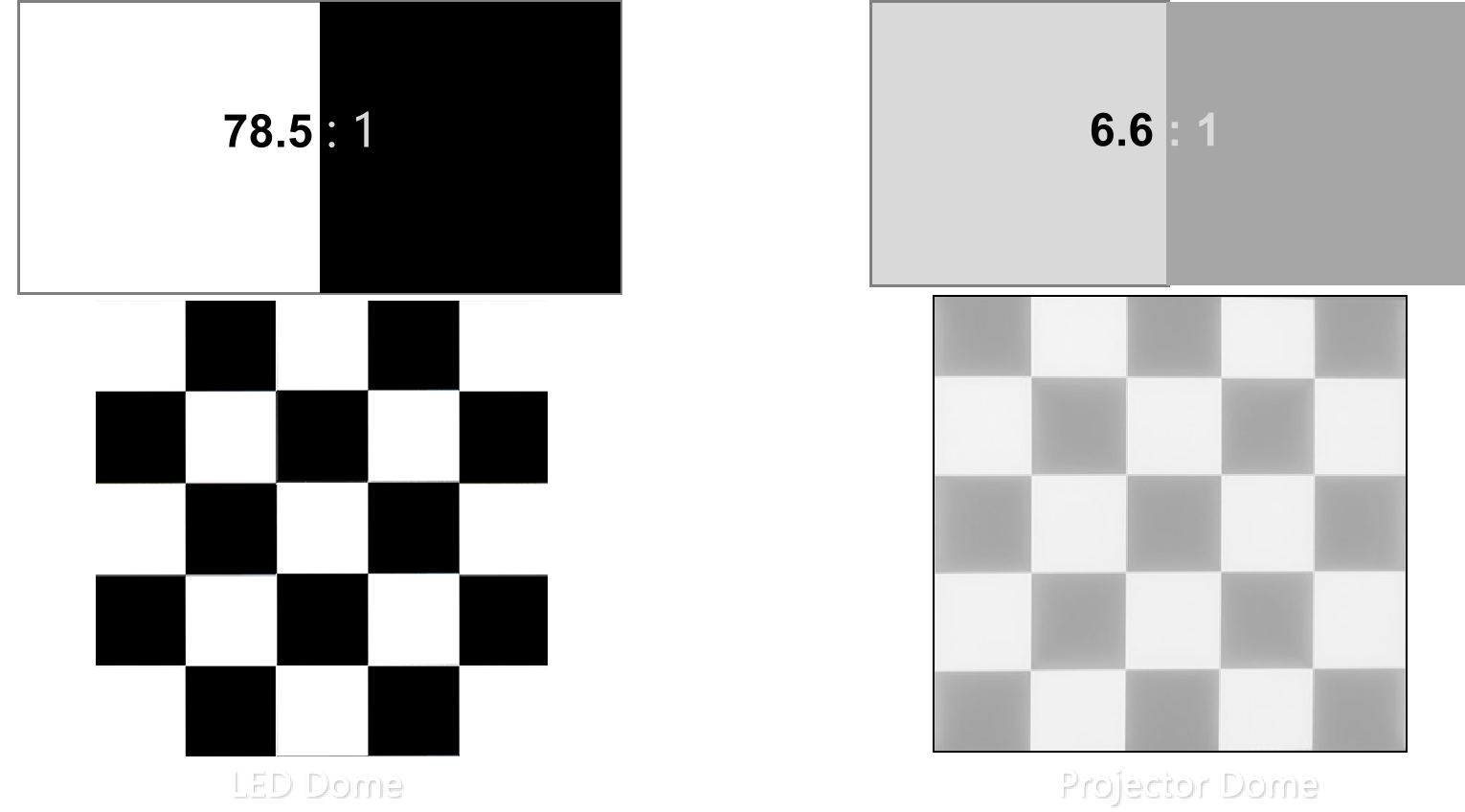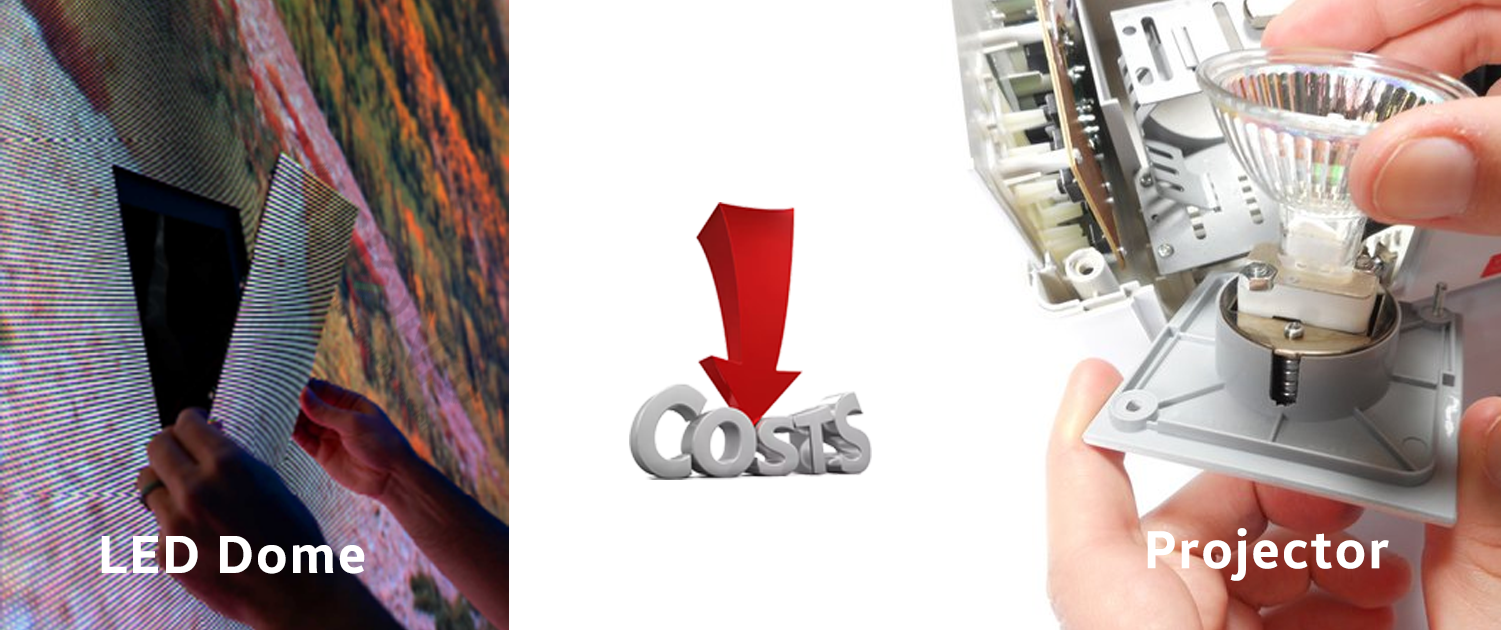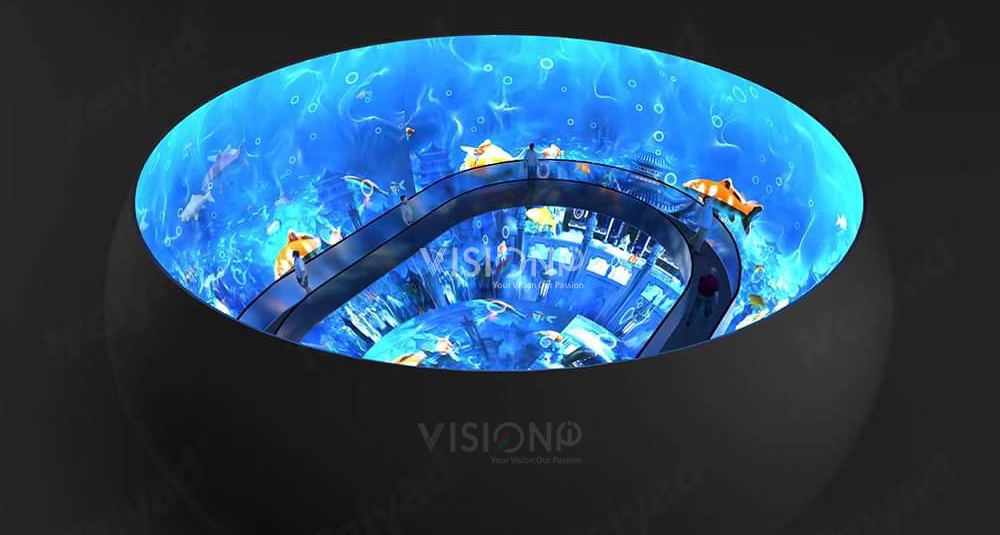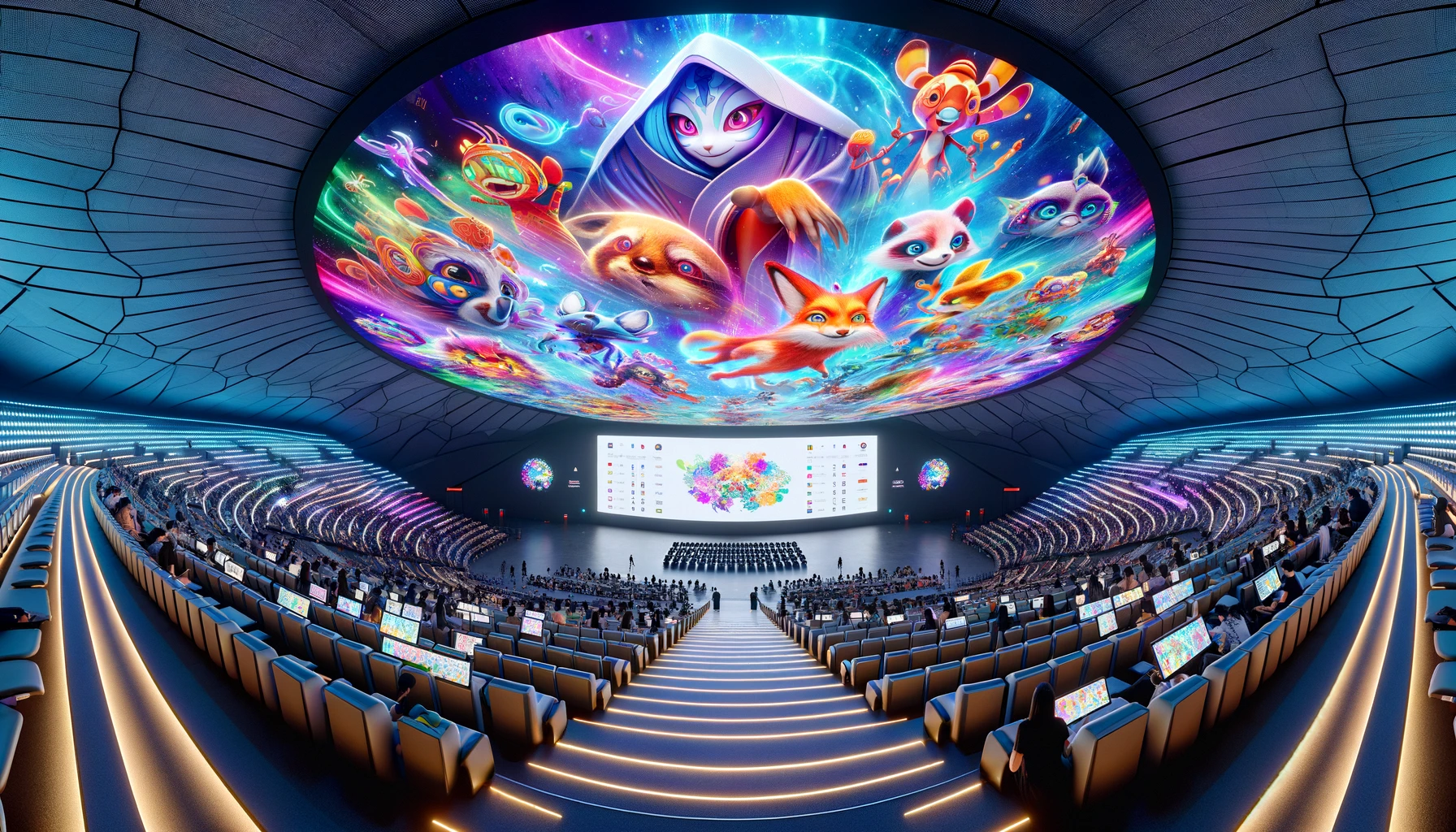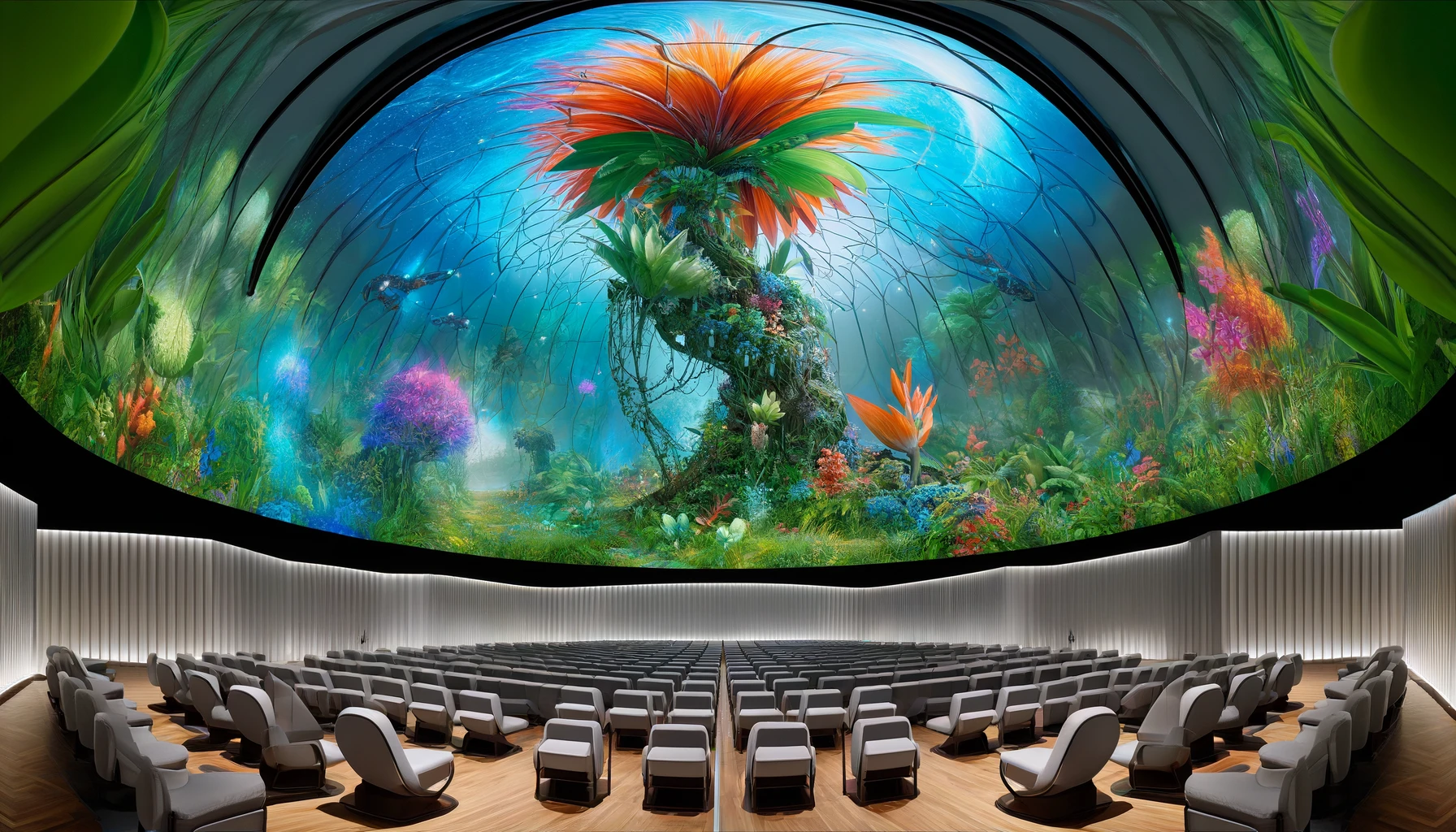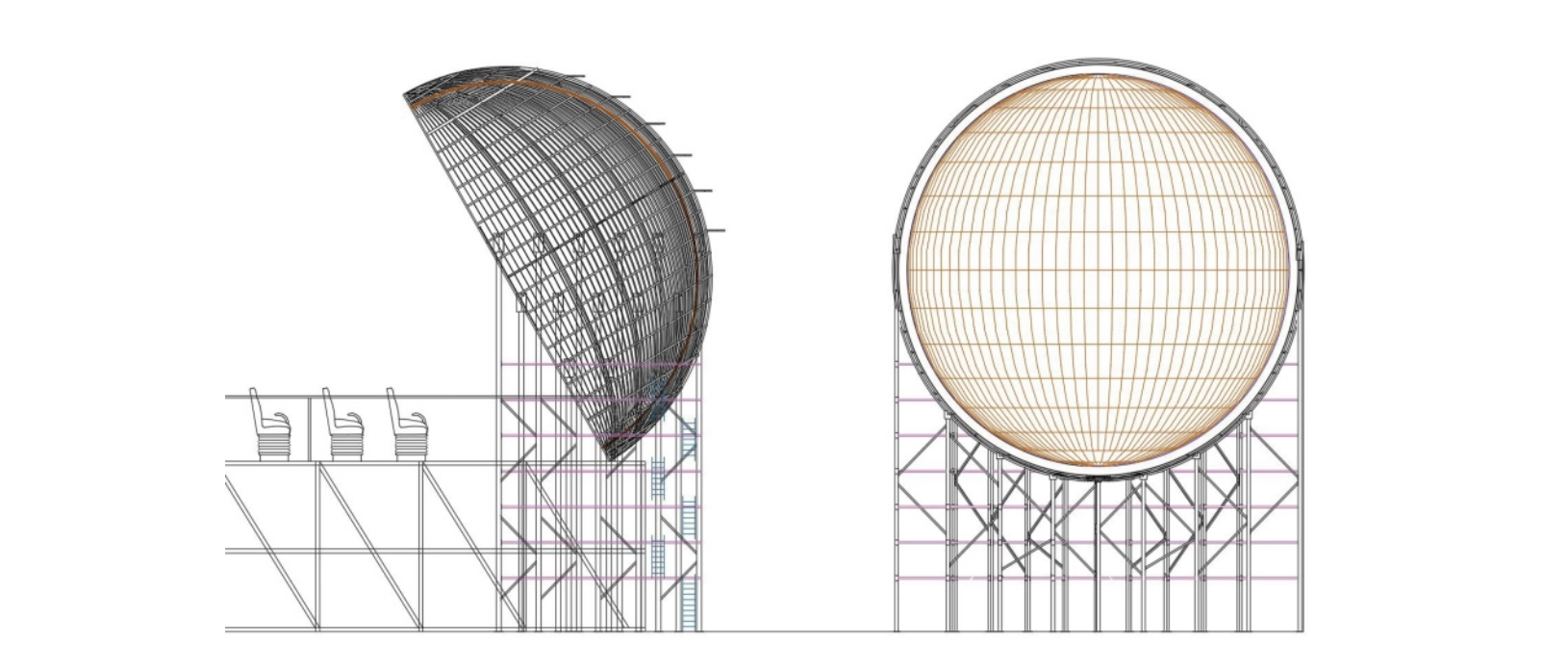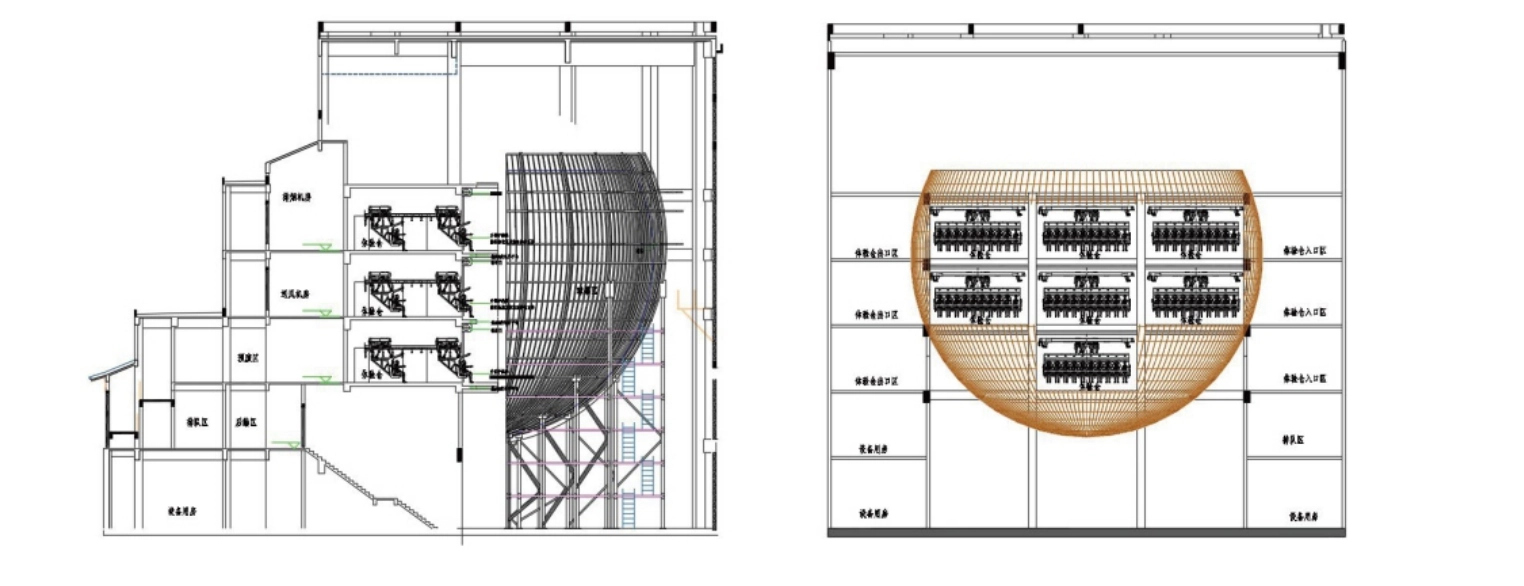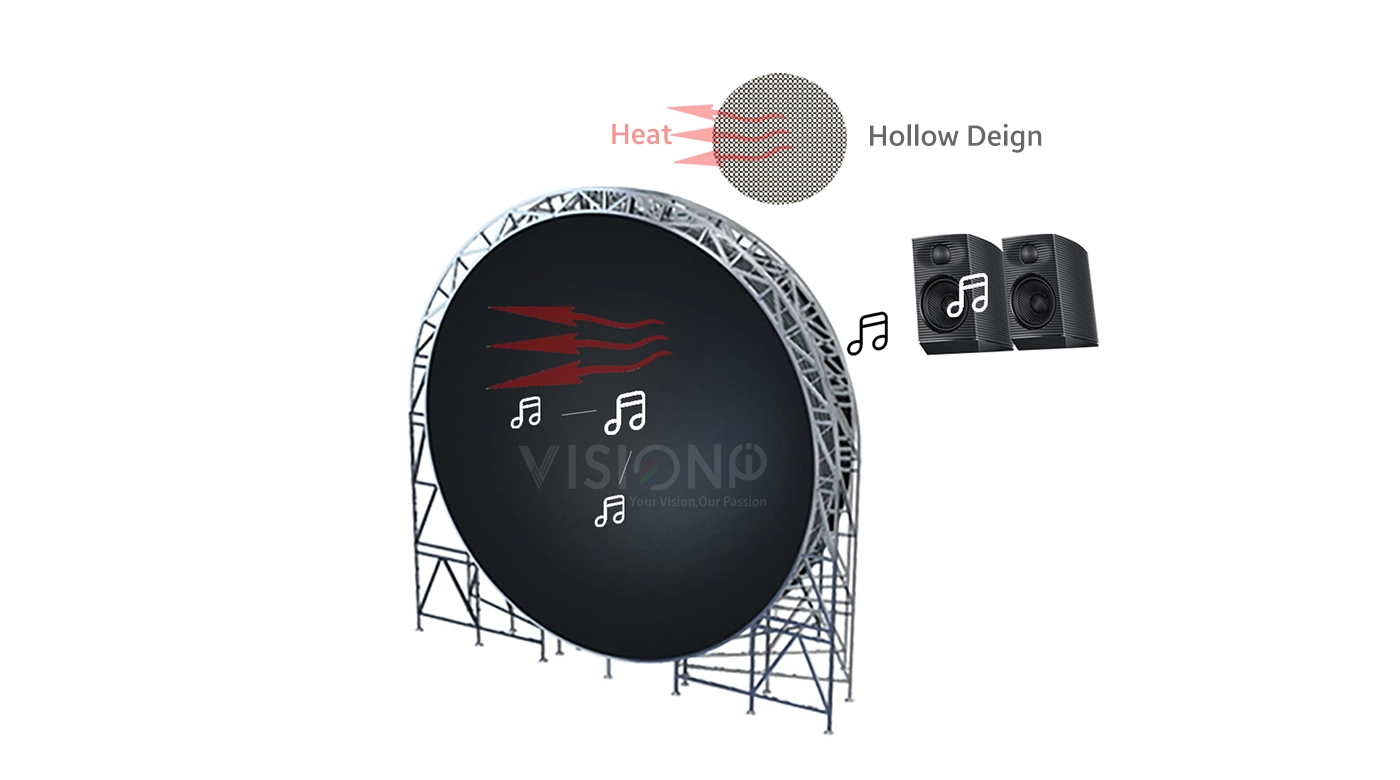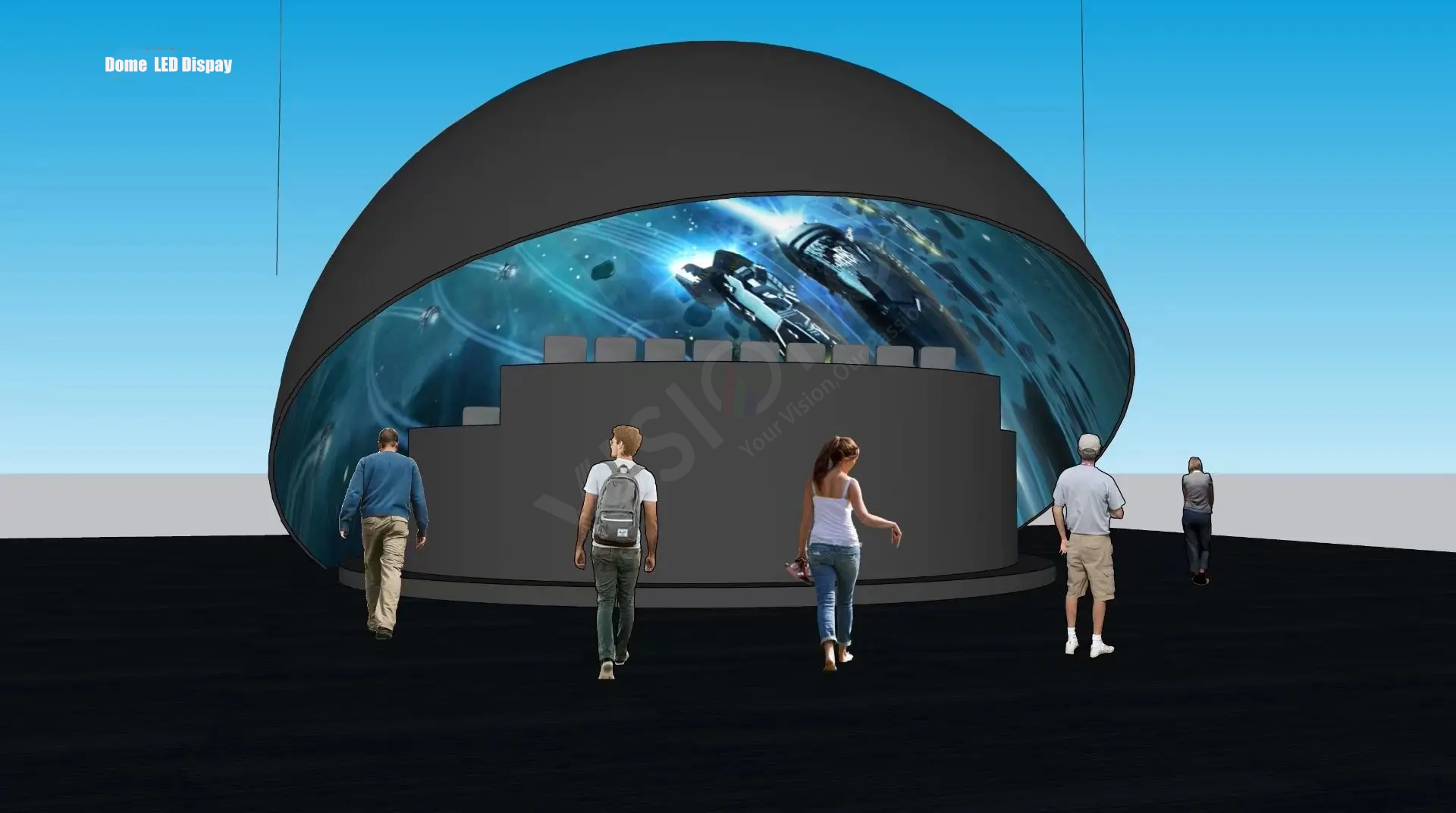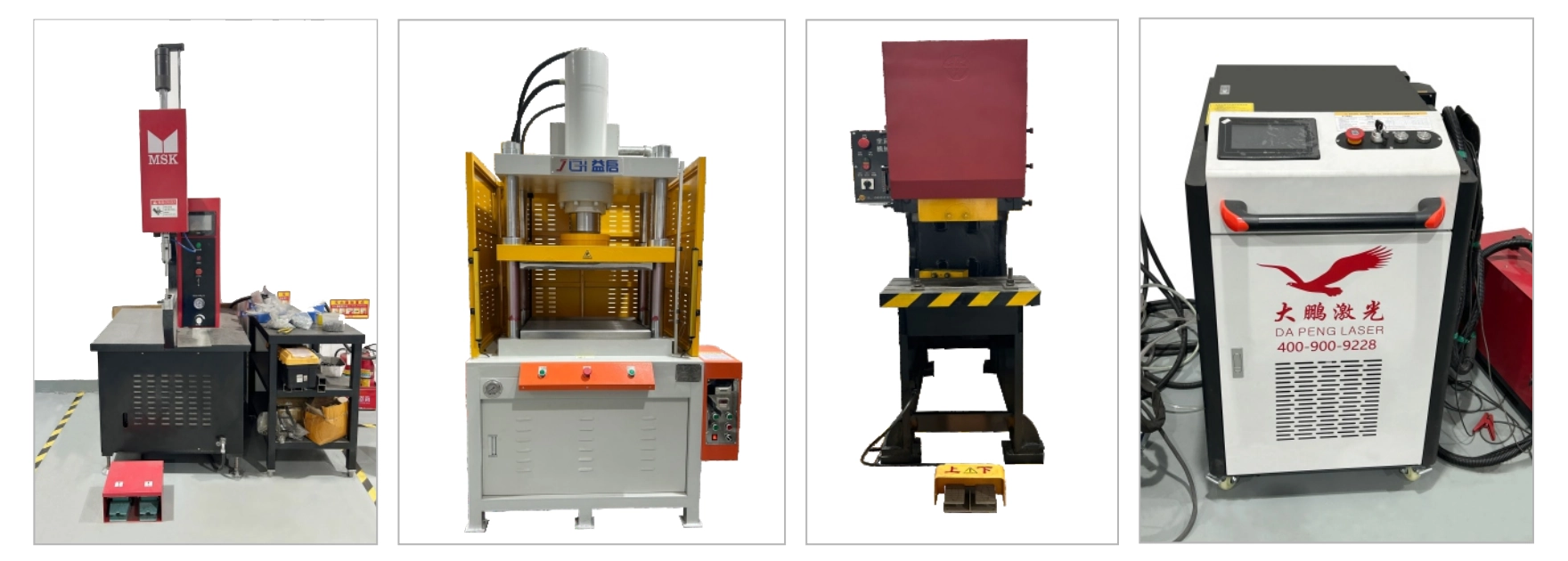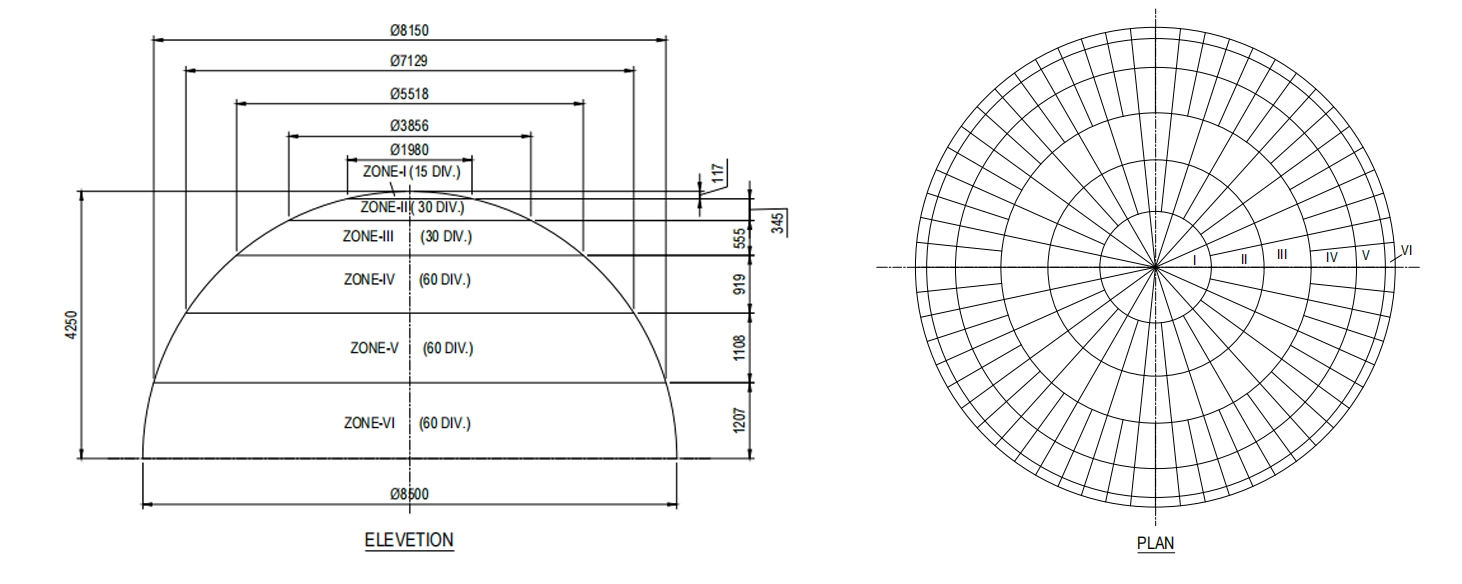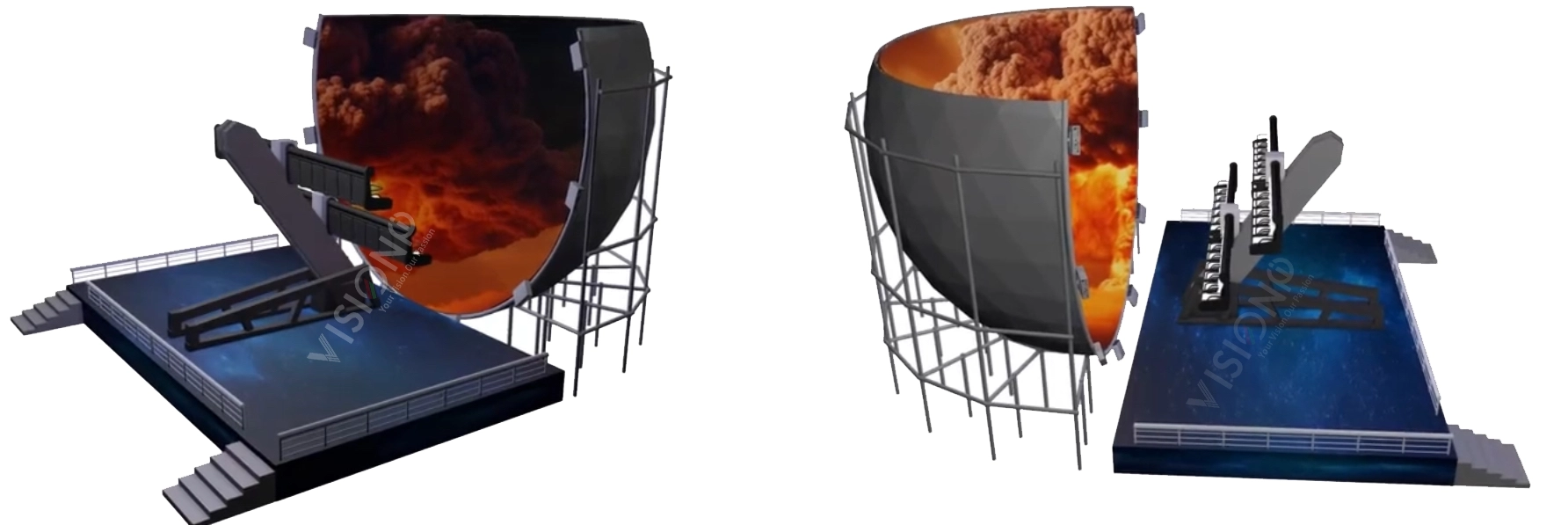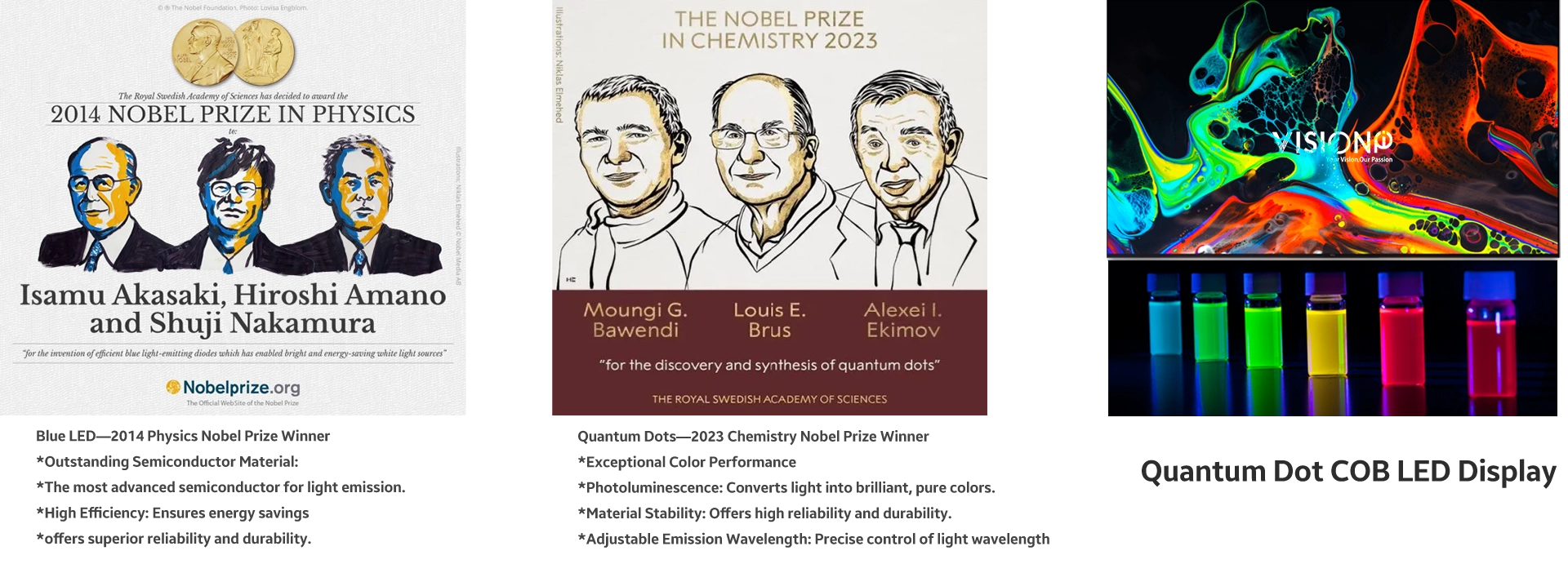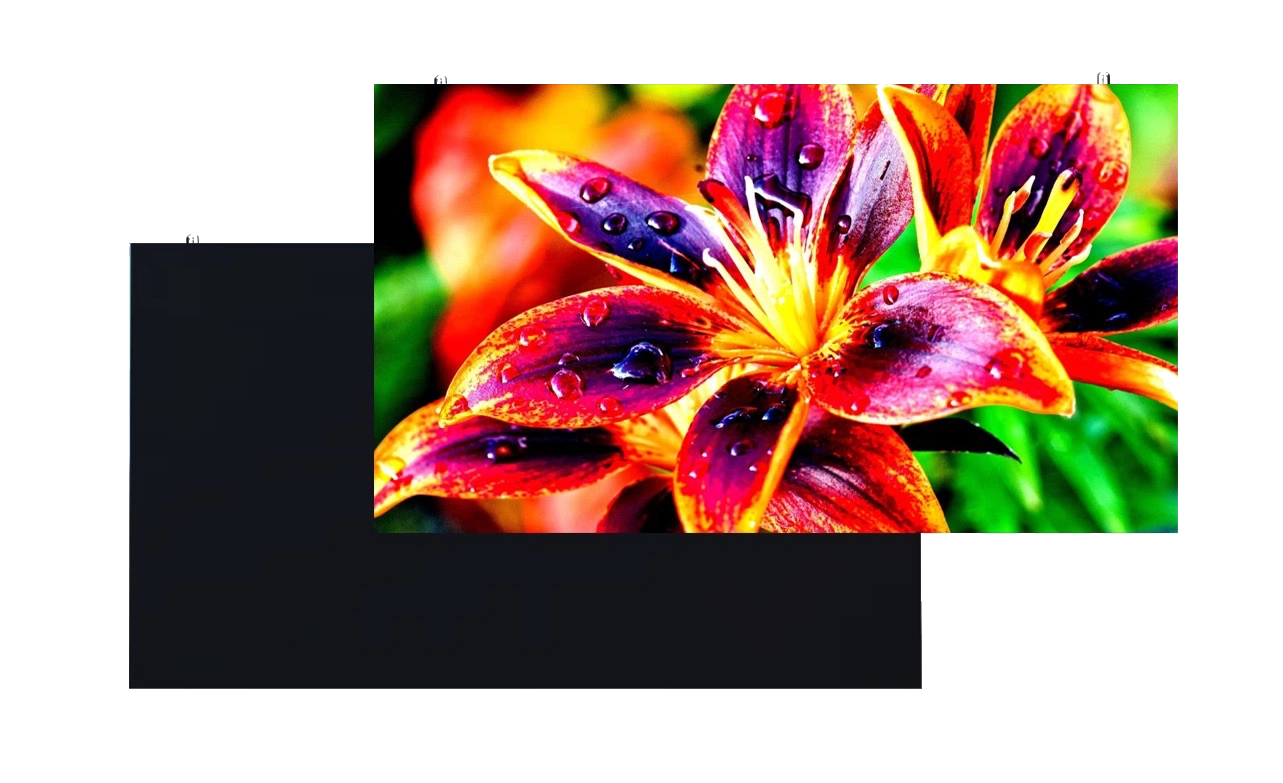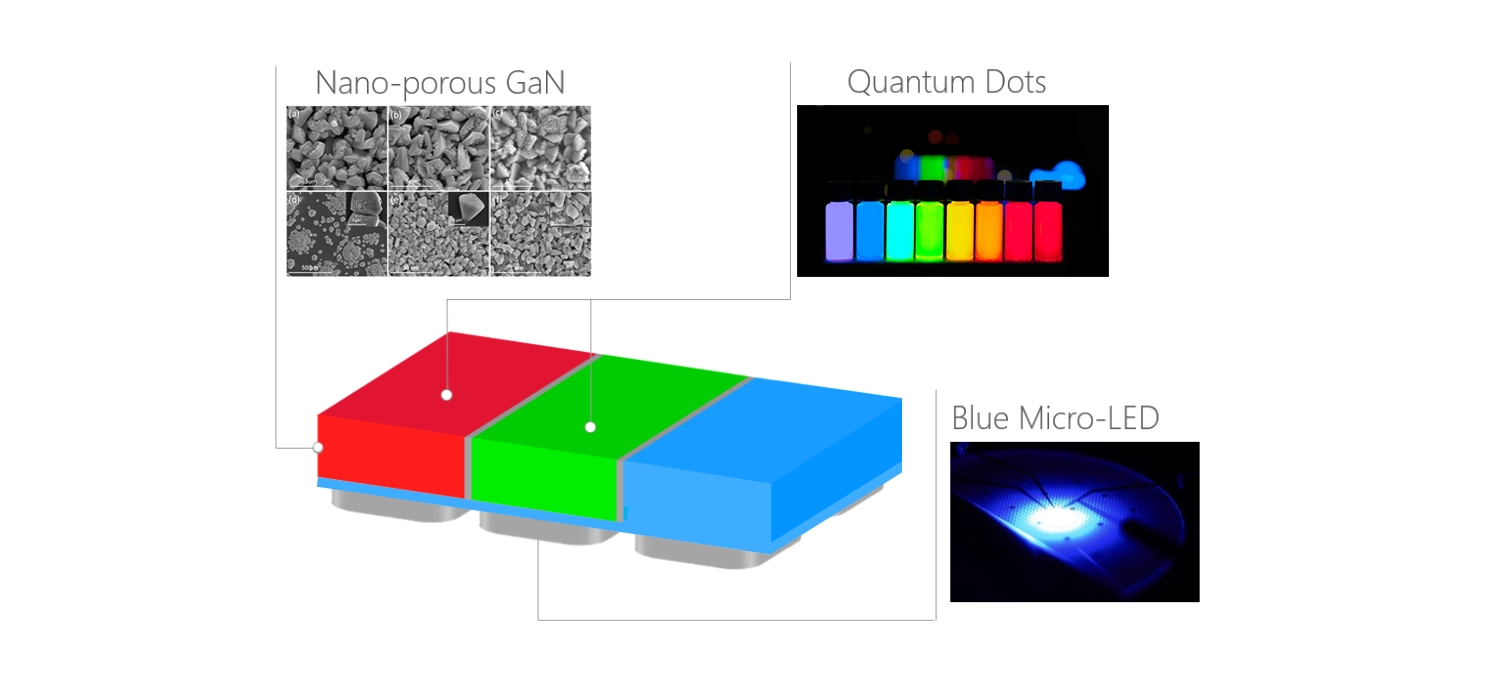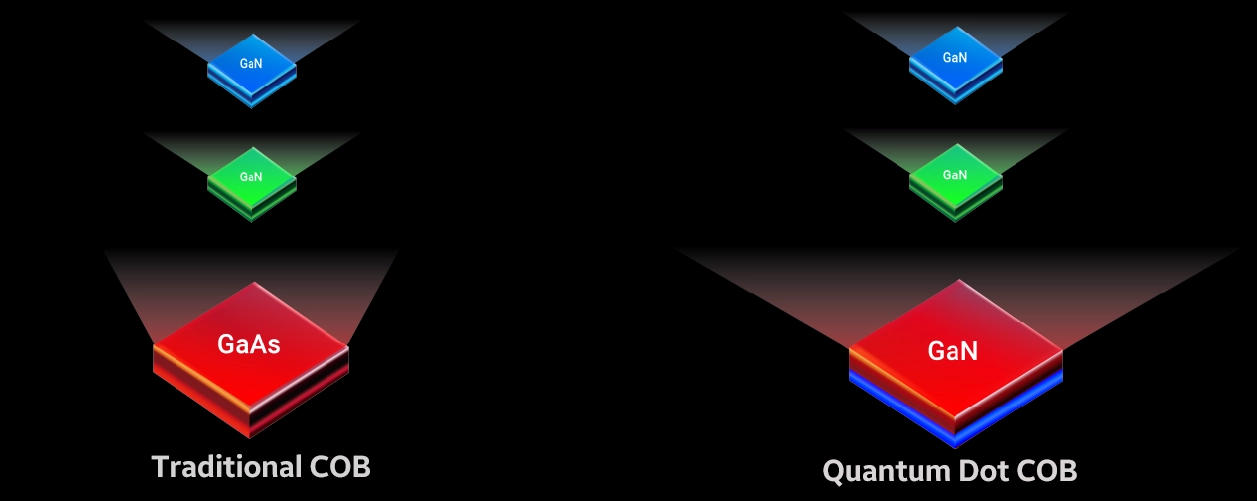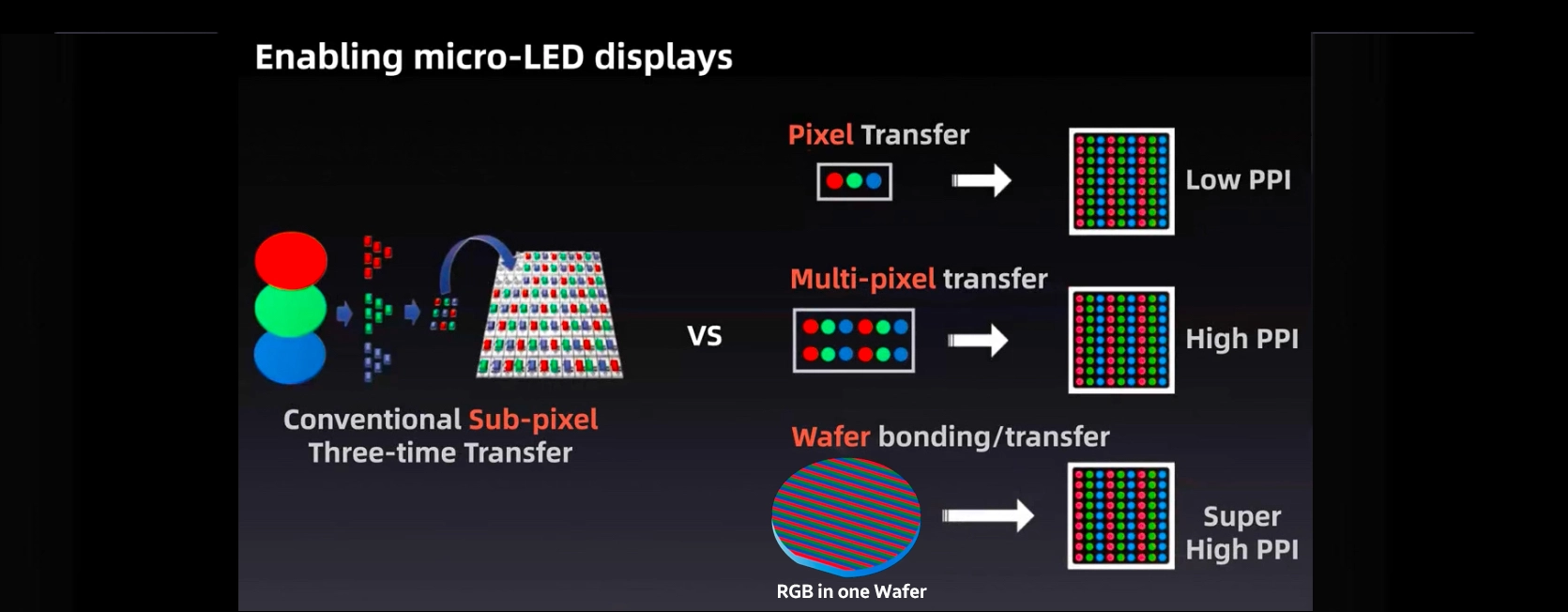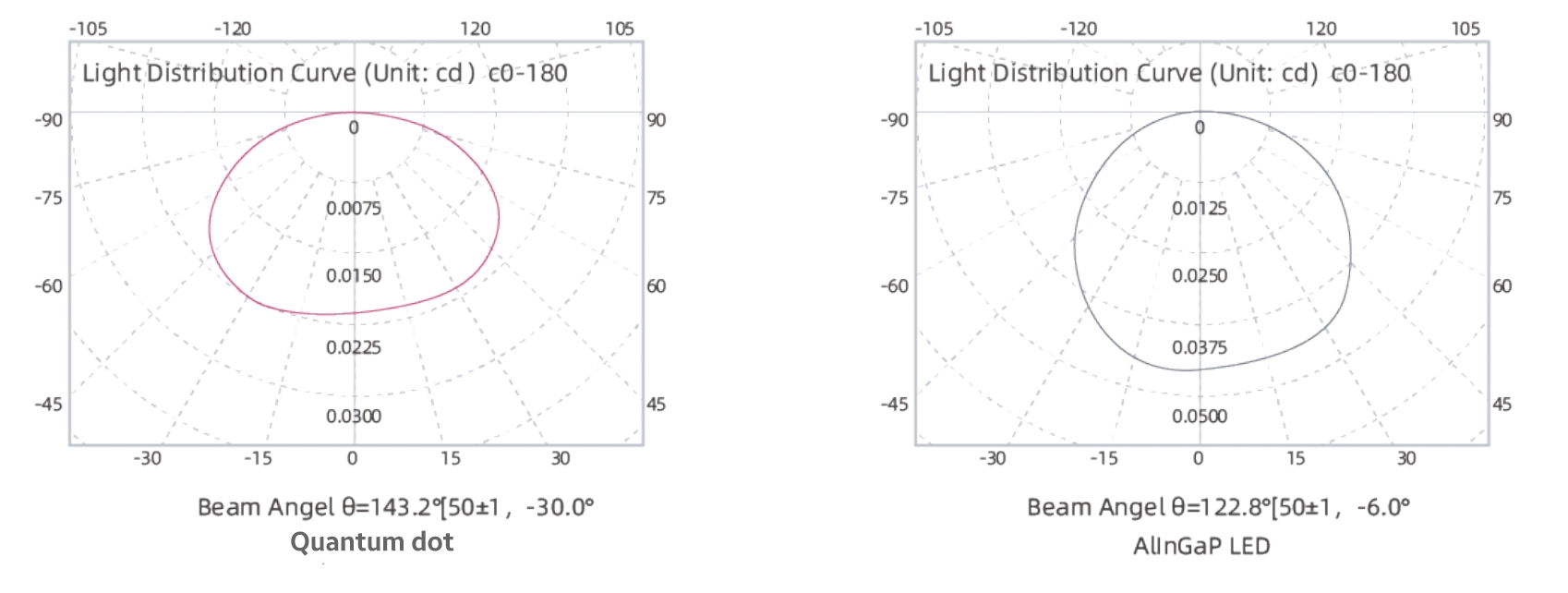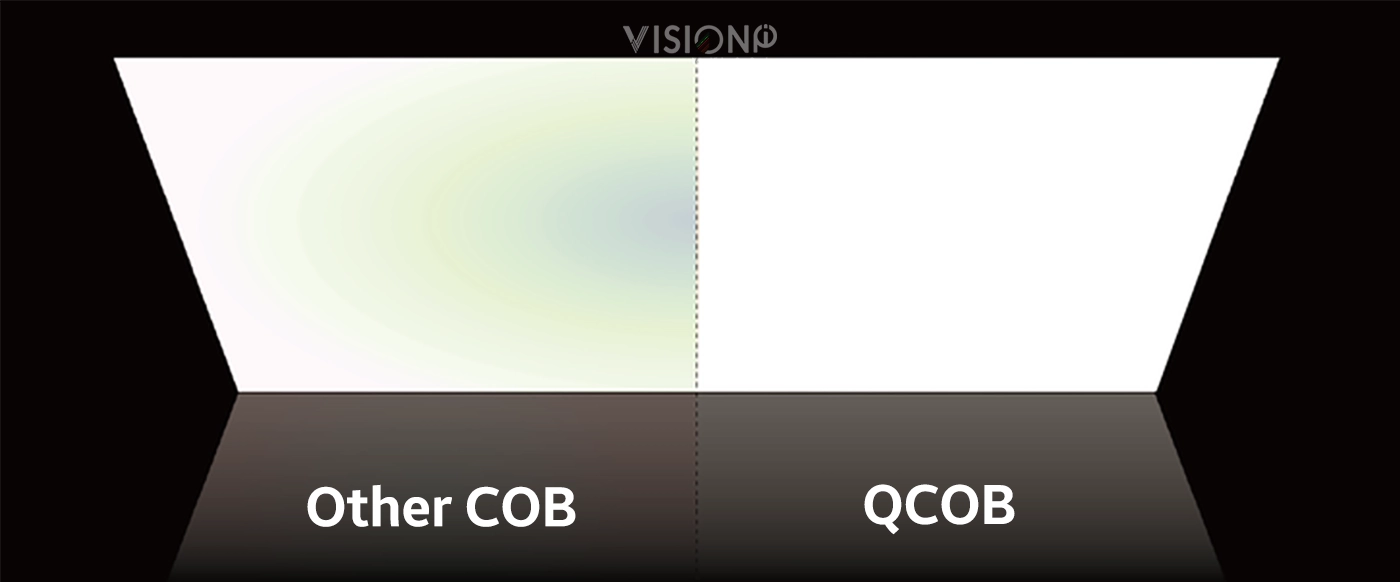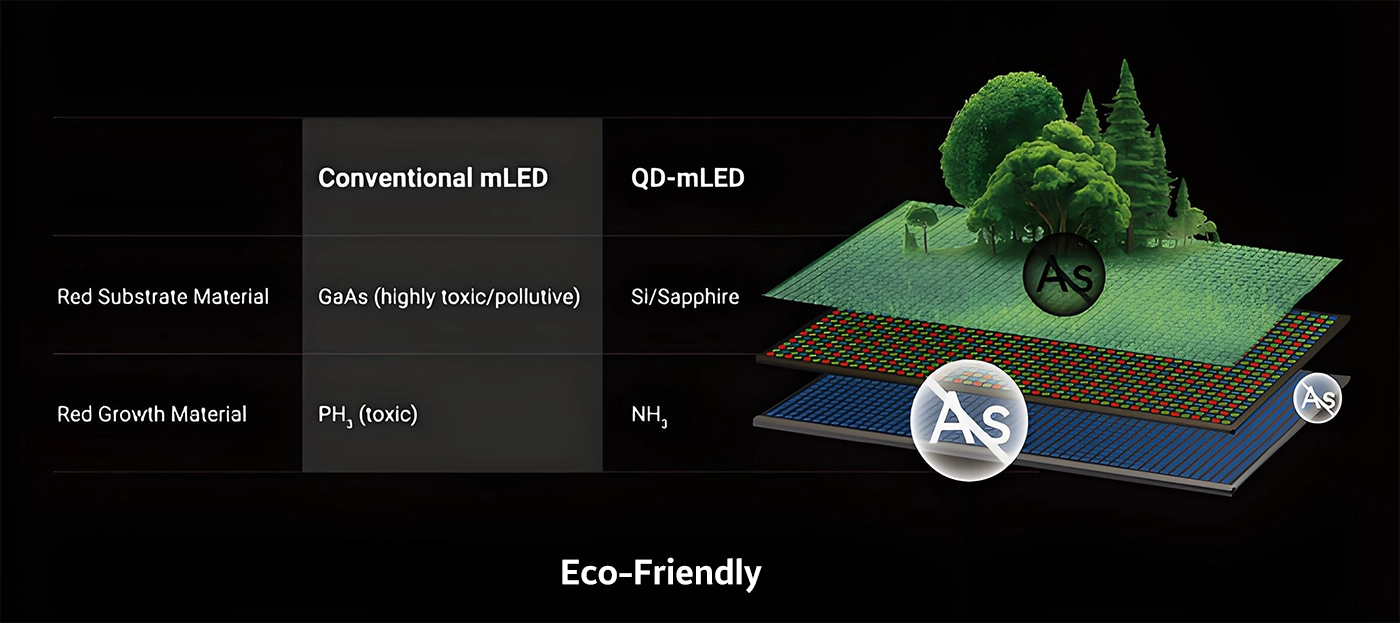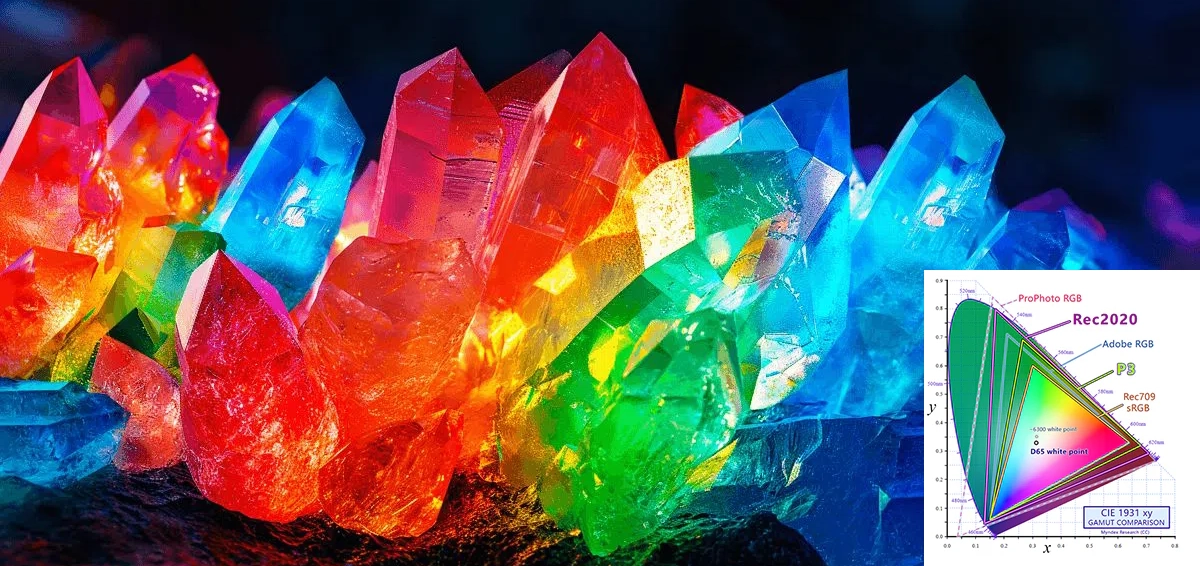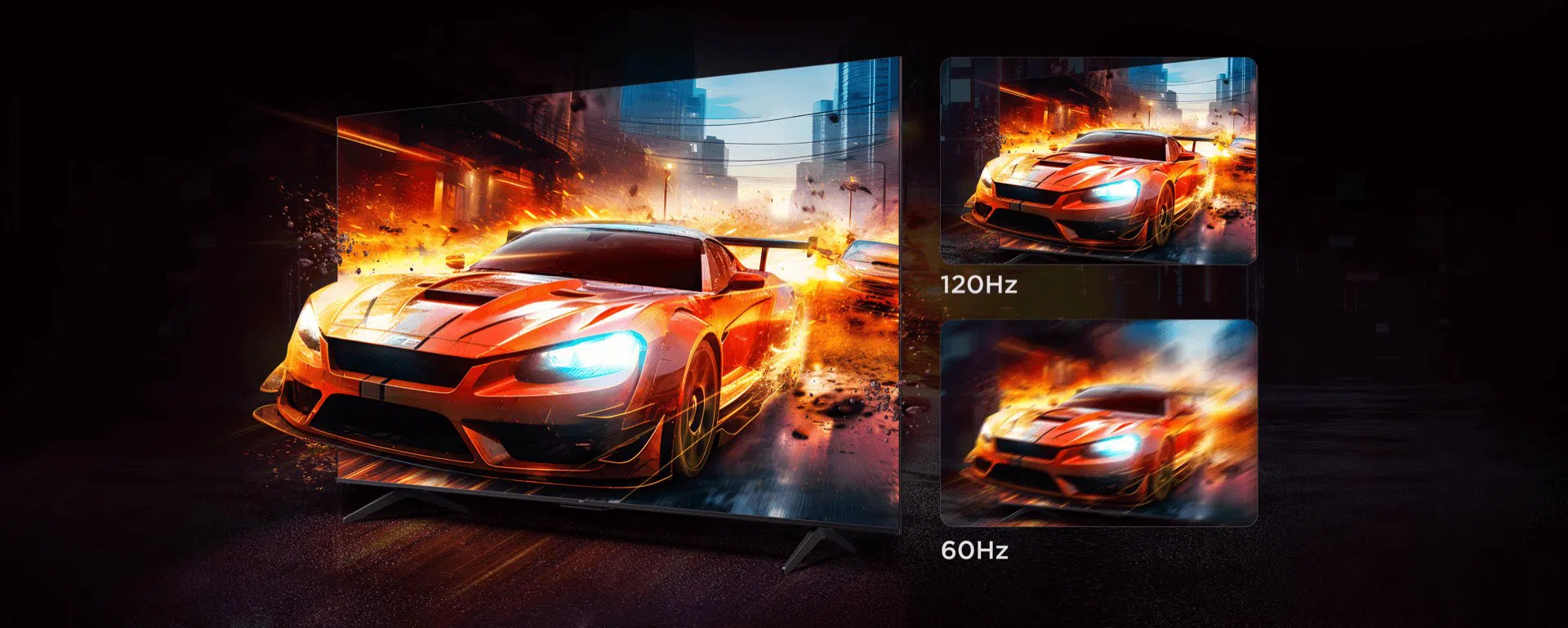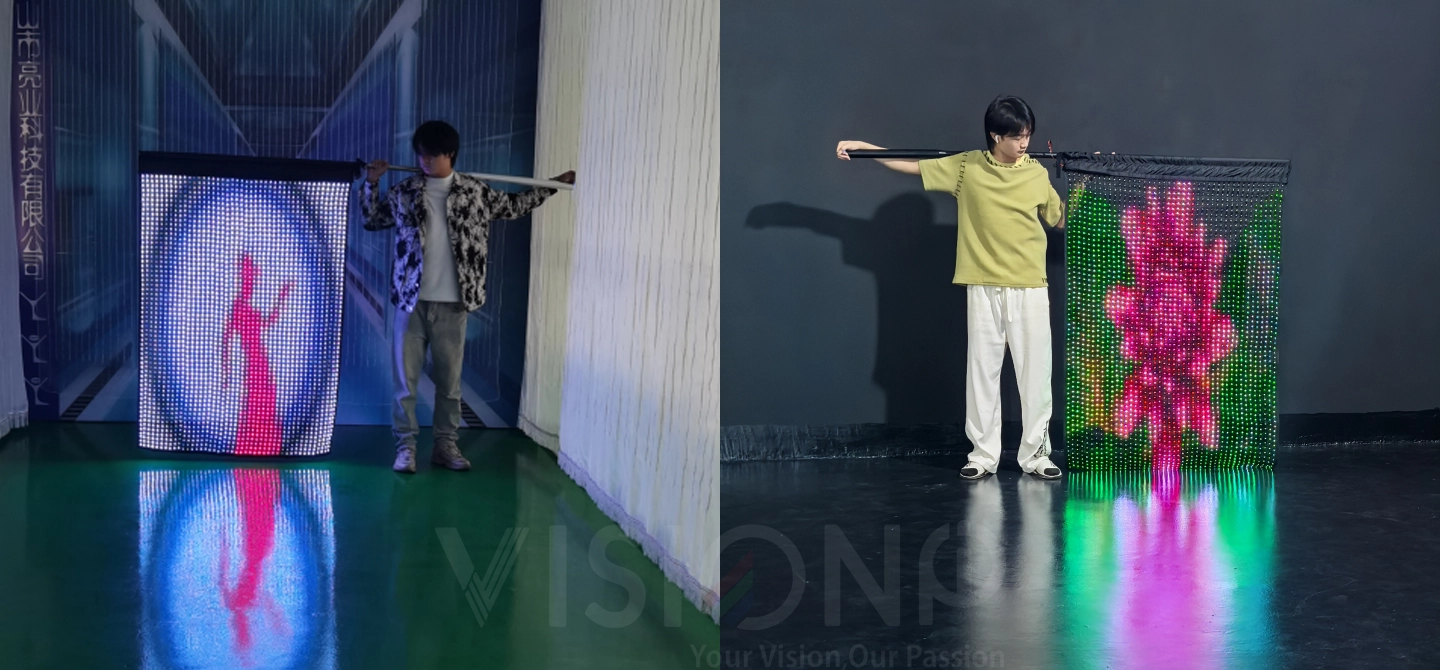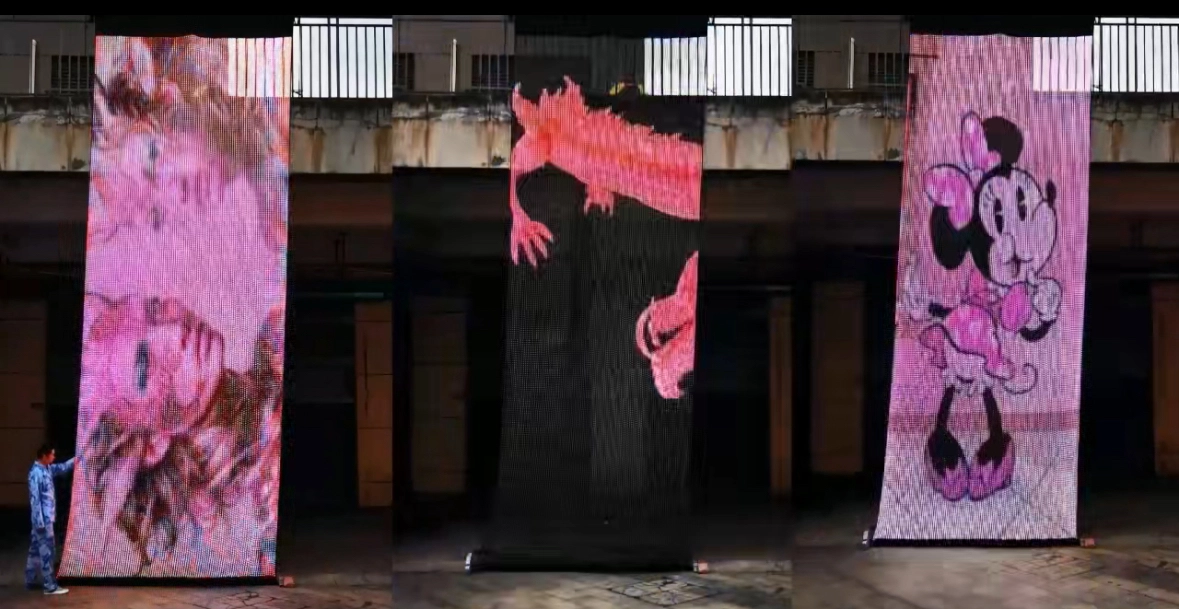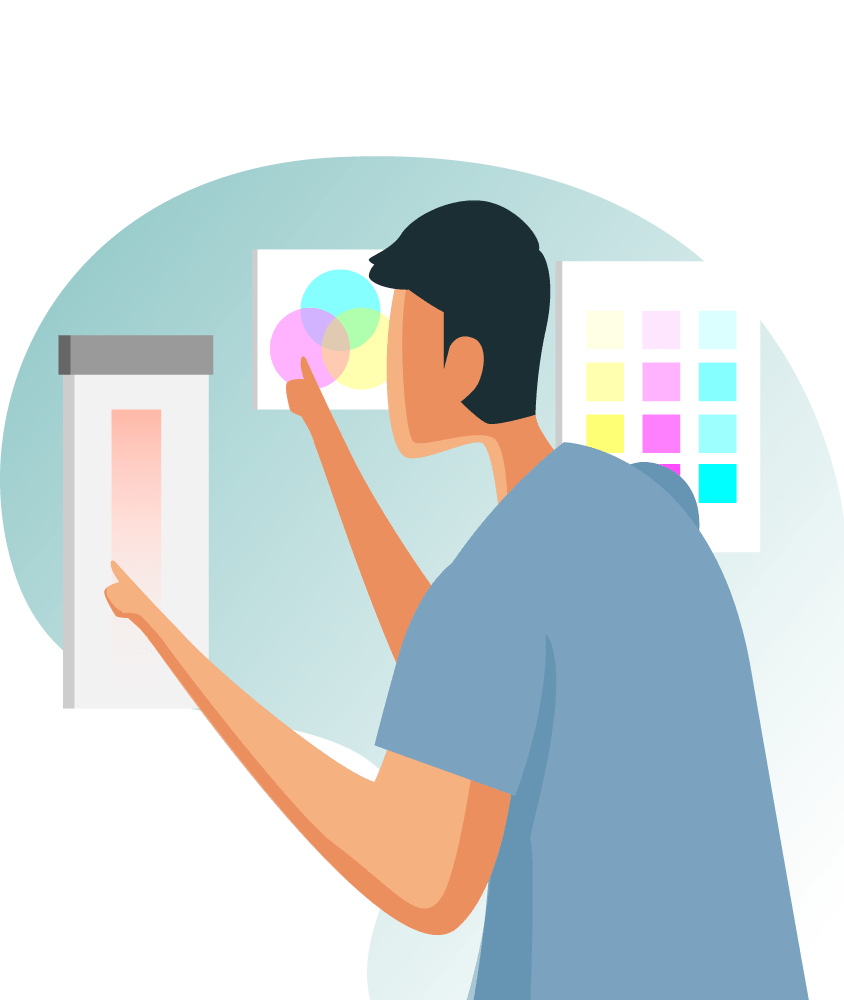Kinetic Rotating LED Display
AI Powered Interactive Kinetic LED Display
At the forefront of innovative display technology, we are proud to offer cutting-edge kinetic LED displays, including kinetic sliding LED screens, kinetic rotating LED displays, and kinetic LED walls, all seamlessly integrated with AI-powered interactive features. These dynamic, motion-driven displays not only captivate audiences but also provide a truly immersive experience, making them perfect for exhibitions, museums, public spaces, and advertising. Our kinetic LED technology offers unmatched versatility, allowing for real-time interaction, stunning visual transformations, and an engaging experience that draws attention and creates lasting impressions.
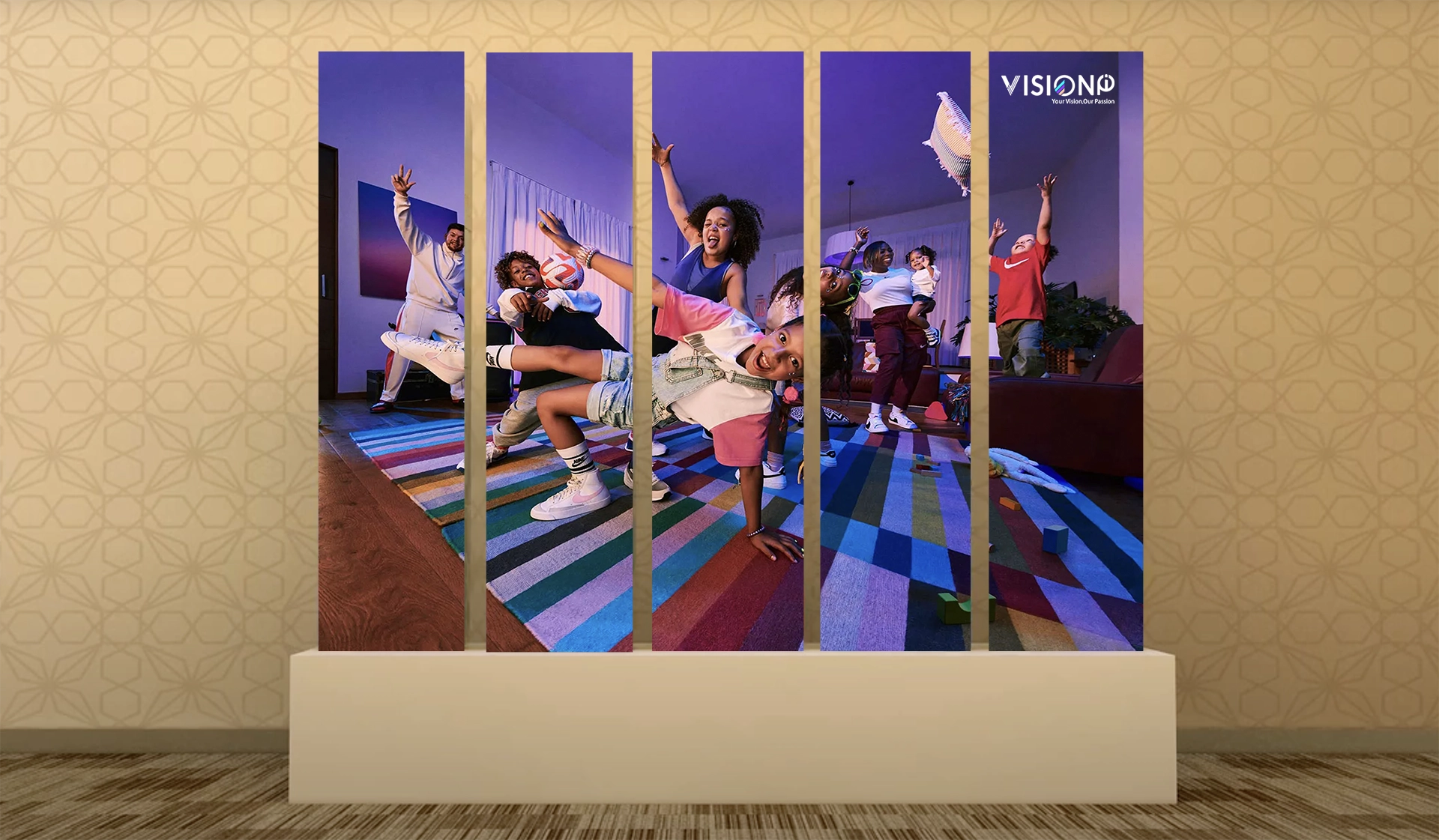
Kinetic DNA Rotating LED Screen
The Rotating DNA LED Screen is an innovative display solution that integrates multiple rotating units to create a dynamic and visually captivating experience. These units combine to form an interactive display that can produce stunning effects such as spirals, swings, and full rotations, enhancing the overall impact of exhibitions and installations
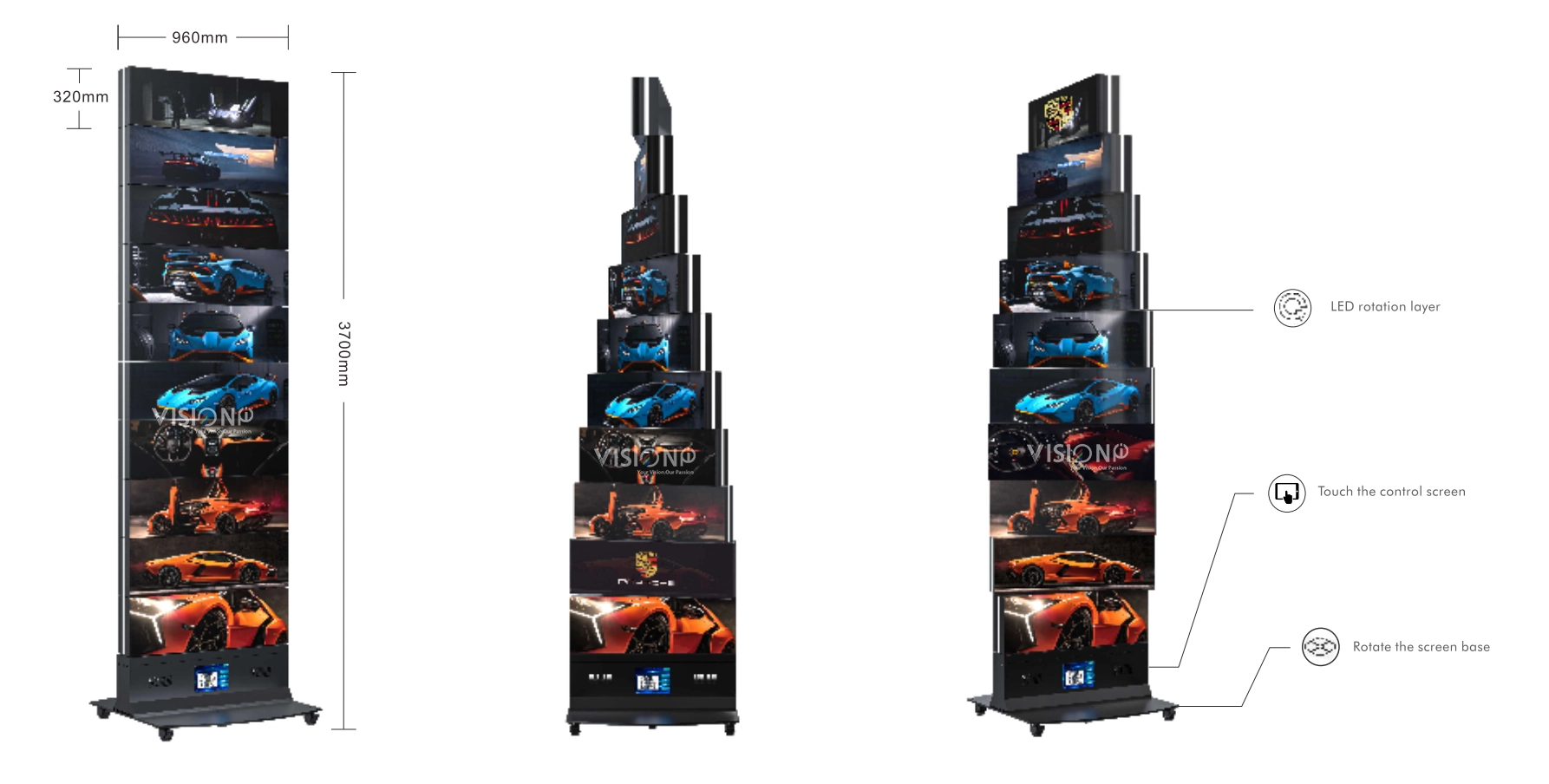
Key Features & Benefits
- Modular Design – Multiple rotating units stack seamlessly to create a unified display system, supporting customized sizes and configurations.
- Dynamic Motion Effects – Enables a variety of motion effects, including spiral rotations, synchronized swings, and continuous 360° movements for an eye-catching presentation.
- Seamless Operation & Maintenance – User-friendly controls with infinite rotation support ensure simple operation and easy maintenance.
- High Performance & Stability – Built with closed-loop DC stepper motors and precision gear drives from leading domestic brands, ensuring extended lifespan, high accuracy, and stable operation.
- Advanced LED Integration – Incorporates high-resolution, high-brightness, and high-contrast LED technology, delivering vivid visuals that remain clear even under strong ambient lighting.
- Flexible Control System – Supports centralized control and action editing, allowing precise motion sequencing with up to 10 programmable actions per second.
- Smart Synchronization – Integrates with multi-axis players for frame-level synchronization, enabling seamless coordination between motion and display content.
- Effortless Installation & Maintenance –
- Modular layered structure with pre-configured factory settings for quick setup.
- Magnetic LED module design for hassle-free maintenance.
- Simple wiring and plug-and-play connectivity ensure fast deployment.
- Soft & Smooth Motion Control – Adjustable acceleration and deceleration settings reduce mechanical stress, ensuring fluid motion and extending device longevity
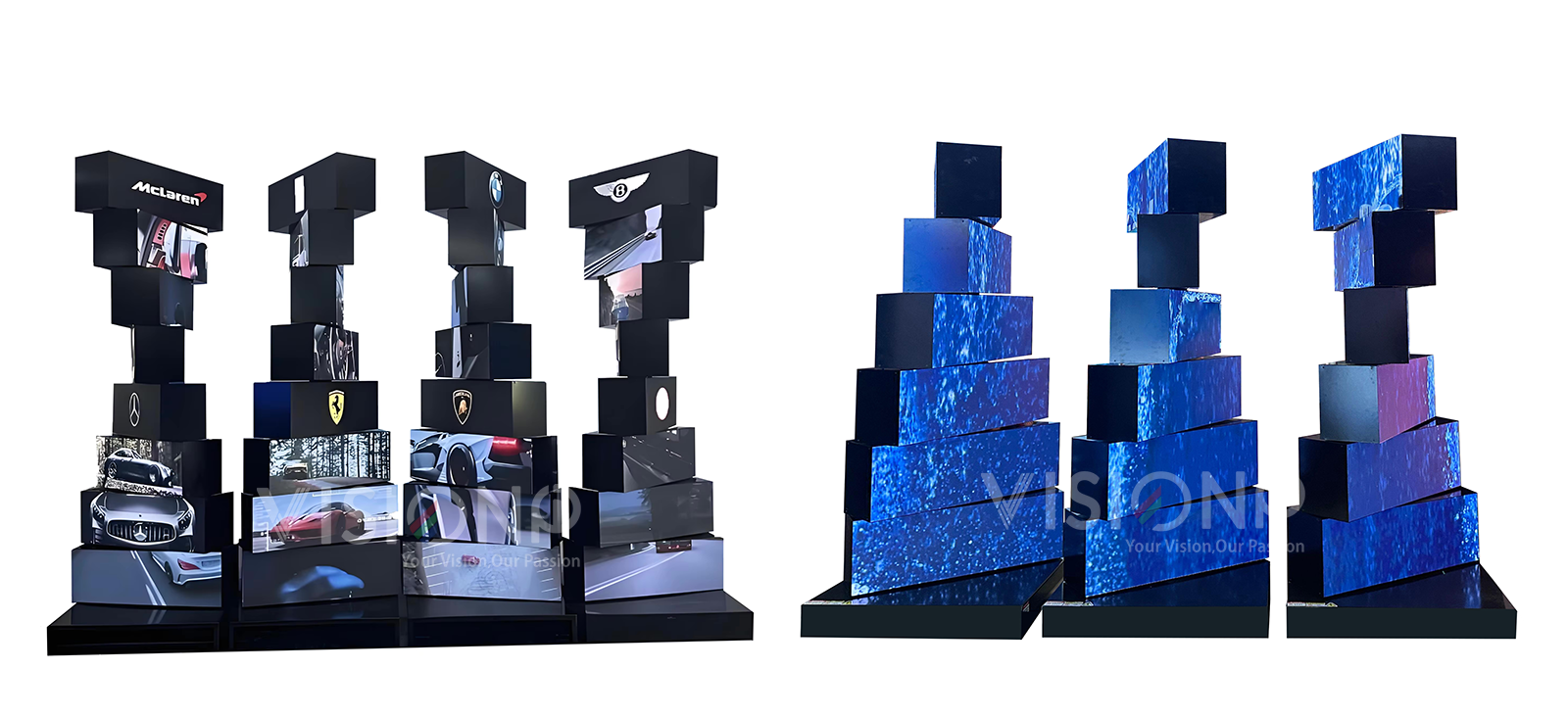
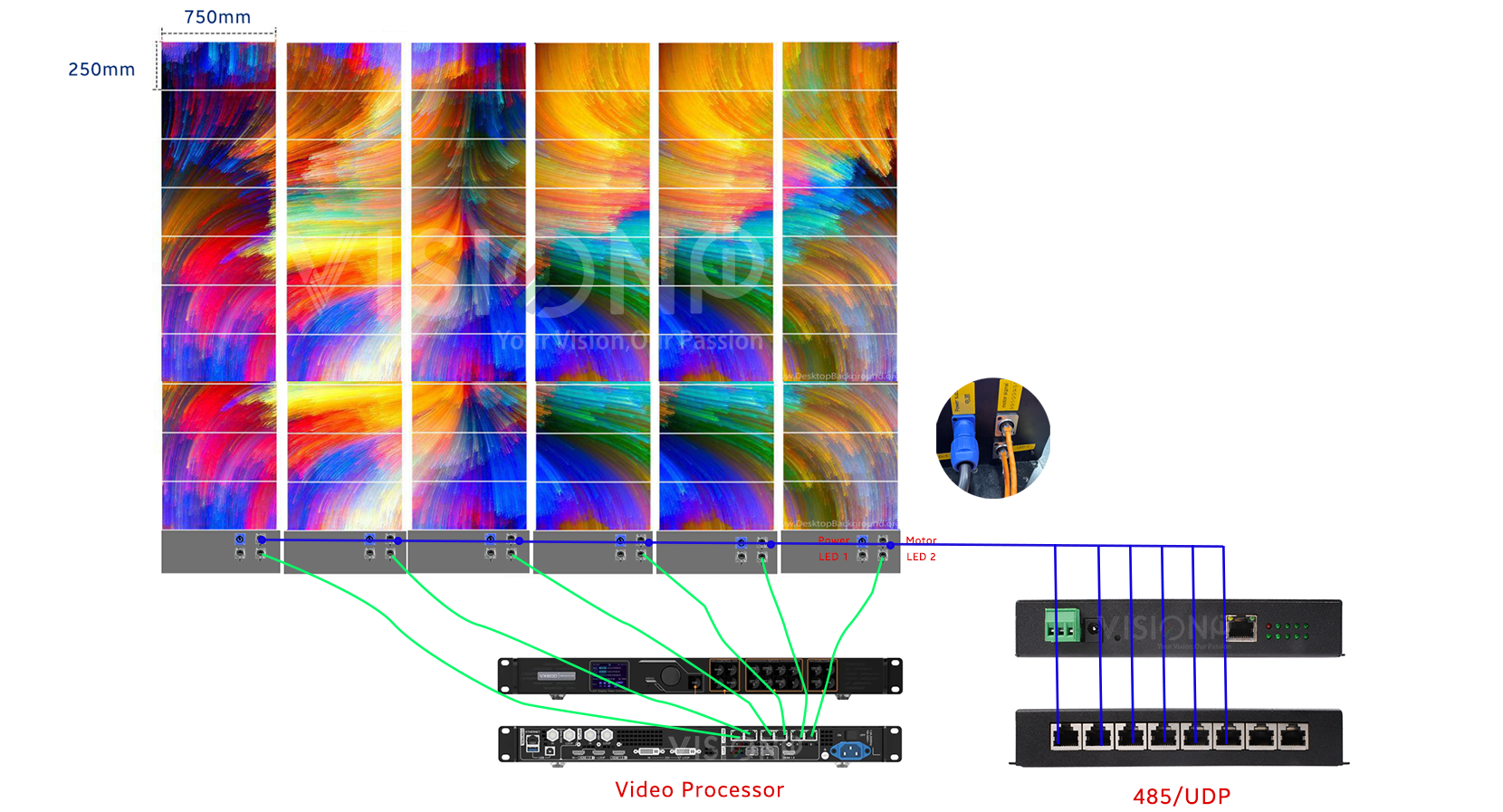
Flexible Size Options
The DNA Rotating LED Display is designed with modular flexibility, using both 250×250mm and 320×160mm panels. This allows for multiple size configurations and a wide range of pixel pitches, including P1.56, P1.9, P2.6, P1.5, P1.8, P2, and P2.5. The display can be customized into various dimensions such as 750×250mm, 500×250mm, 1000×250mm, 640×320mm, 800×320mm, 960×320mm, and more, ensuring adaptable solutions for different project requirements.
Kinetic Matrix Slide LED Screen
- The Kinetic Matrix Slide LED Screen consists of multiple sliding rail display screens that move horizontally (left to right) and vertically (up and down) to form a unified display unit. These units can be infinitely stacked to create an ultra-wide display carrier.
- This screen system is designed to enhance film and exhibit displays with dynamic, action-driven visuals. By editing action scripts tailored to specific film effects, the screen makes the display more vivid, engaging, and unique.
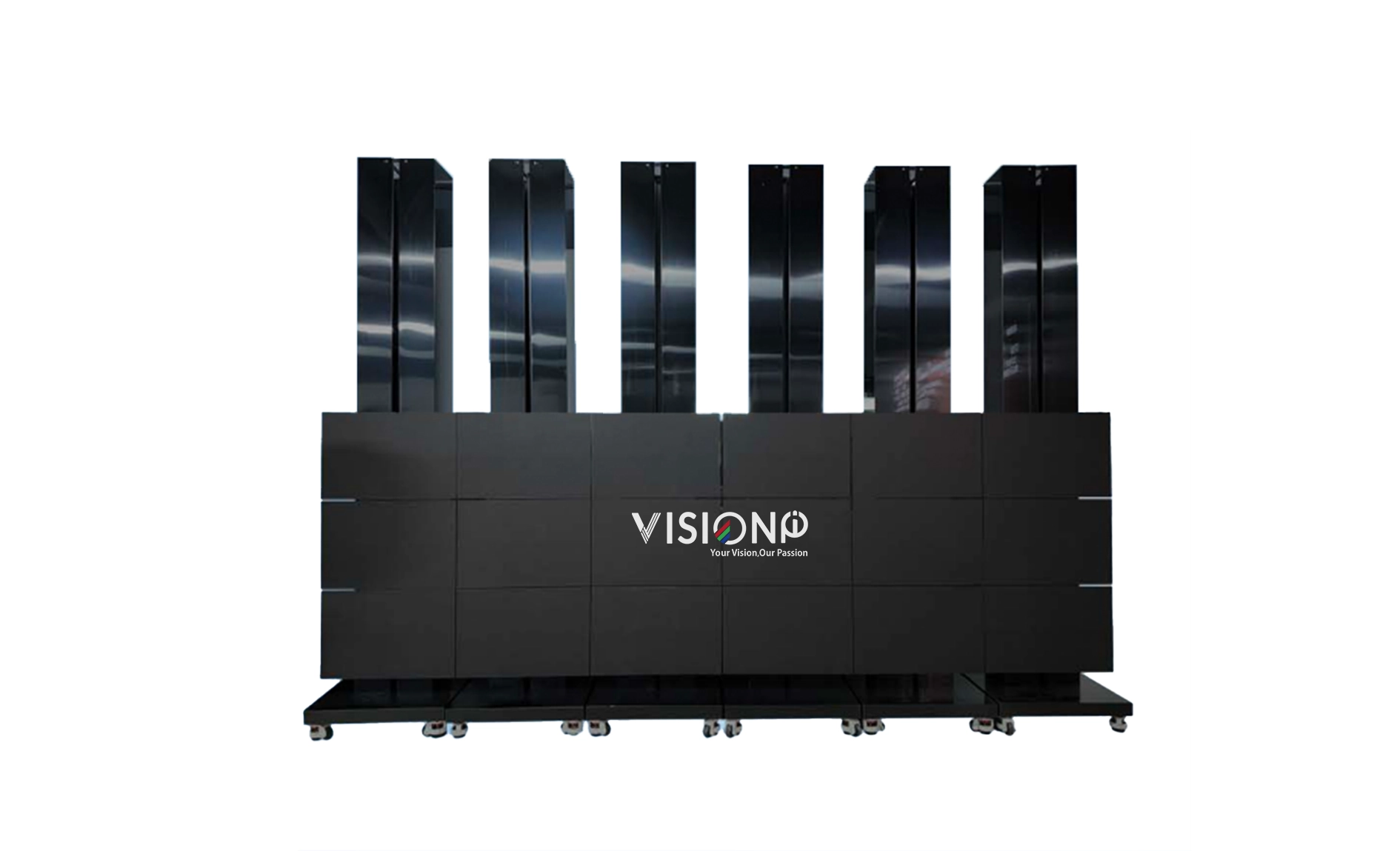
Key Features:
- Simple Operation & Maintenance: The kinetic matrix slide LED screen is easy to operate and requires minimal maintenance.
- High Operating Stability: Built for optimal performance, offering high reliability and stability.
- Customizable Display Sizes: The system allows for flexible screen sizes, adapting to various display needs.
- Stable & Simple Design: The structure is both simple to set up and extremely stable for long-term use.
- Real-Time Action Preview: Users can preview action scripts in real-time to ensure smooth integration with the display.
- Effortless Installation: Designed for quick and hassle-free setup.
- Central Control Support: Compatible with central control systems for streamlined operation and management.
- Easy Action Editing: Intuitive editing tools allow for simple action script modifications, ensuring a perfect fit for the film’s narrative.
Technical Specifications:
- Compatible with Various Display Systems: The kinetic matrix slide LED screen can be integrated with LED screens, LCD splicing screens, projection systems, and other display technologies for enhanced versatility.
- Automated Action Script Generation: The system automatically generates action scripts based on movie frames. It allows for easy editing, with up to 10 actions added per second. Scripts can be customized and previewed frame-by-frame.
- Modular Design: Each unit is composed of multiple sliding display modules, ensuring easy installation, maintenance, and the ability to replace either individual units or the entire module.
- Advanced Motor & Drive Technology: Utilizes a trusted AC servo motor and synchronous belt drive to minimize noise and improve the precision of movements. The motor selection is based on load weight for optimal performance.
- Adjustable Acceleration & Deceleration: The system offers customizable acceleration and deceleration settings, reducing wear and tear on the system and ensuring smooth, controlled motion.
- Safety Features: Includes anti-collision safety protection to enhance equipment safety and ensure stable operation.
- Customizable Screen Design: The number and size of the screens can be tailored to fit specific display requirements, offering full flexibility in design and layout.
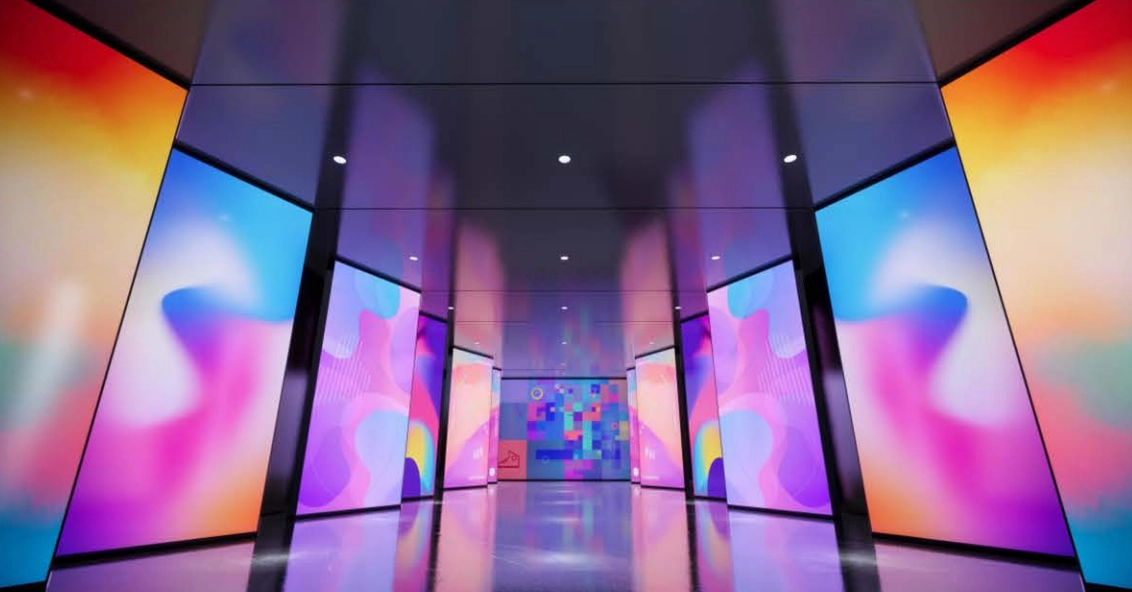
Open and Close Rotating Screen
- The Open and Close Rotating Screen is the first of its kind in China from Chuangchi mobile screen series. It consists of multiple sliding rail display screens that can slide and rotate left to right, forming a dynamic display carrier. This design allows for infinite expansion to create ultra-wide displays, which can be customized to fit specific film effects and exhibition needs. The result is an enhanced visual experience that captivates audiences and makes exhibits stand out.
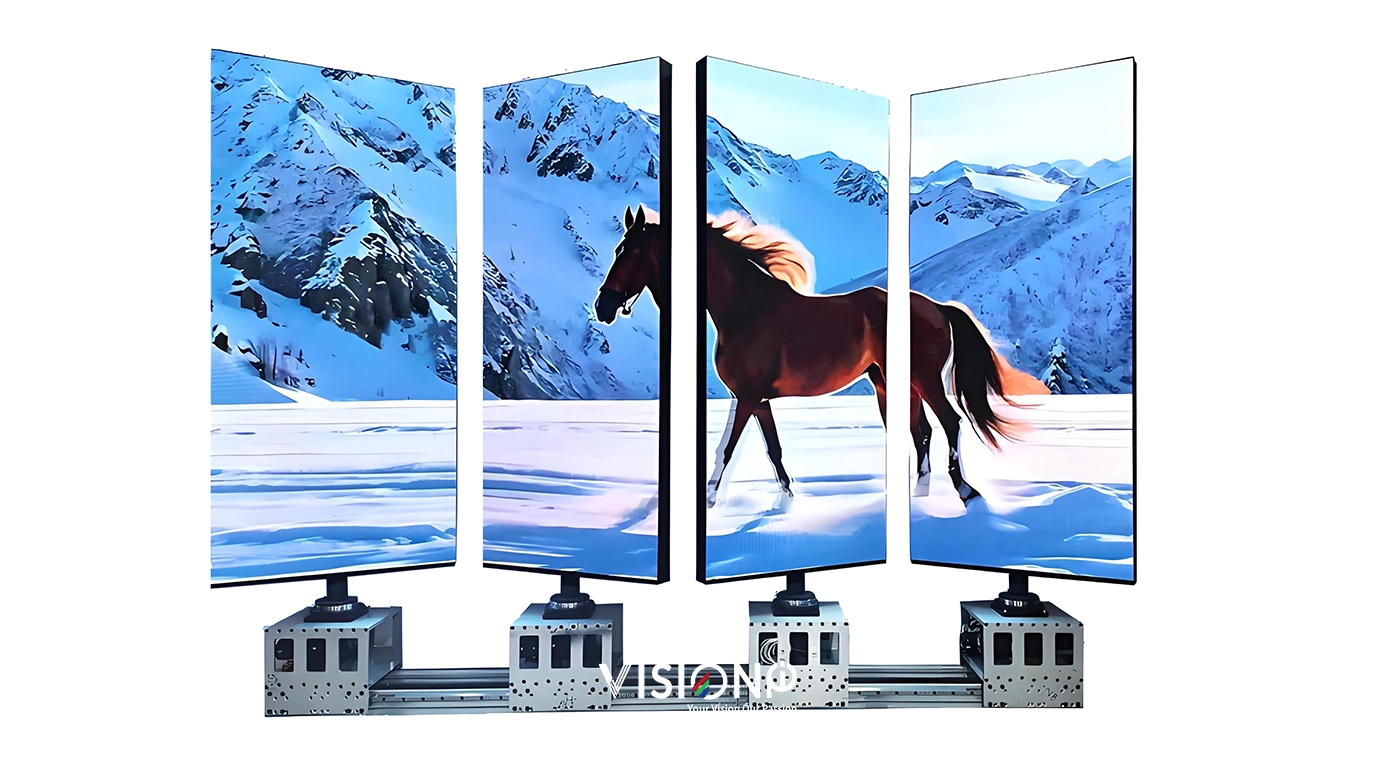
Product Characteristics:
- Display Carrier Compatibility: Can be combined with LED screens, LCD splicing screens, LCD displays, projection systems, and other display technologies.
- Automated Action Script: Action scripts are automatically generated based on movie frames. Editing is simple, and there is no learning curve for users.
- Modular Design: The display modules are easy to install, maintain, and replace, allowing for seamless integration and minimal downtime.
- Low Noise, High Stability: The self-developed transmission system ensures low noise and high operational stability, improving the accuracy of device movements.
- Customizable Motion: Adjustable acceleration and deceleration help reduce the impact on the device while ensuring smoother movement.
- Safety Features: Anti-collision protection ensures safe operation, minimizing risks to the display unit and surrounding environment.
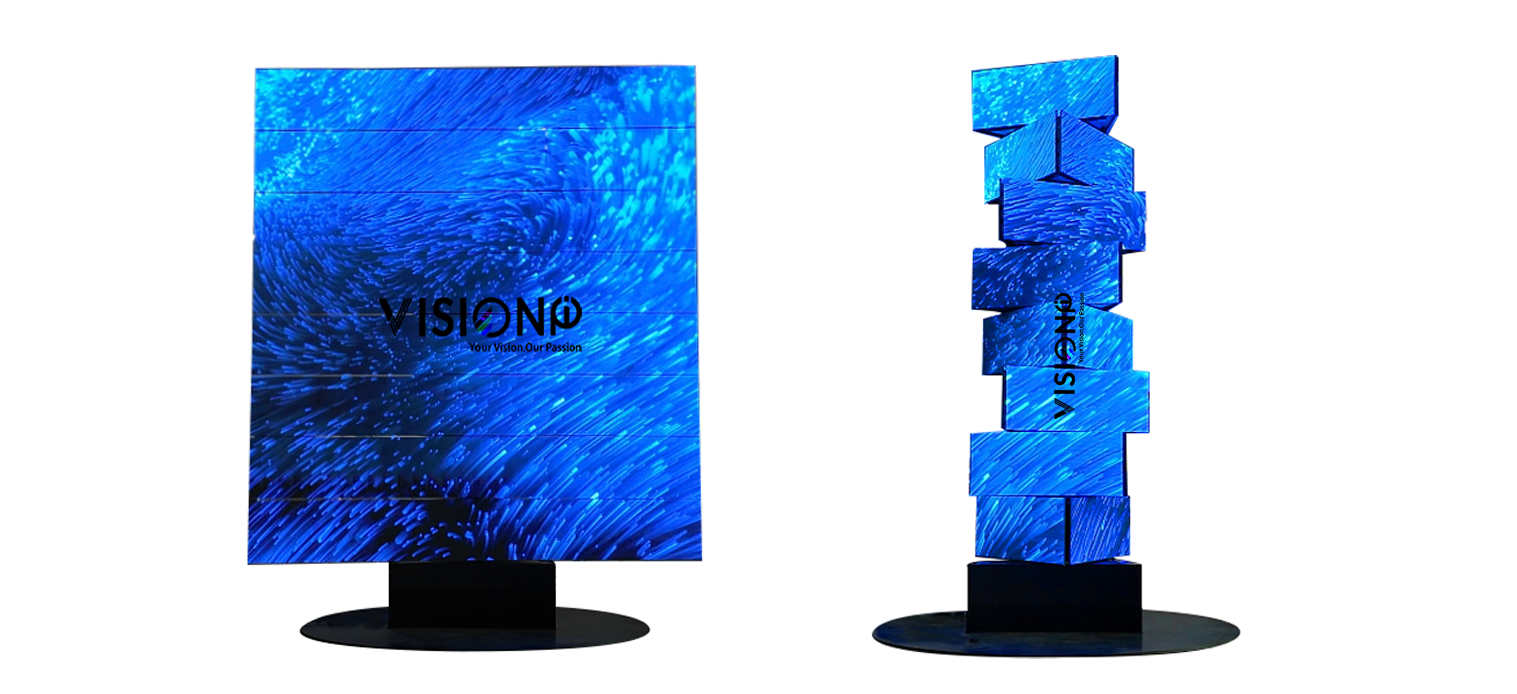
Triangle 3 sides Foldable and rotating kinetic LED display
The foldable and rotating kinetic LED display is an innovative display technology designed for dynamic, interactive experiences. It consists of three individual LED screens that can fold and unfold to create different shapes and display formats. When folded, the screens combine to form a triangular structure, offering a compact and visually striking display. When expanded, the screens unfold to form a continuous, elongated display for larger, more expansive visuals.
In addition to the foldable feature, the entire display system is capable of rotating, providing a 360-degree view and enabling versatile positioning to adapt to different environments and viewing angles. This makes the display perfect for high-impact settings like exhibitions, events, retail spaces, and advertising, where flexibility, interactivity, and eye-catching design are essential.
Kinetic Robotic LED Display
- The Kinetic LED Panel allows stacking multiple units to form a seamless display carrier. In theory, this enables unlimited stacking, creating custom display sizes.
- It’s designed to enhance film displays, offering vivid and immersive effects tailored to action scripts.
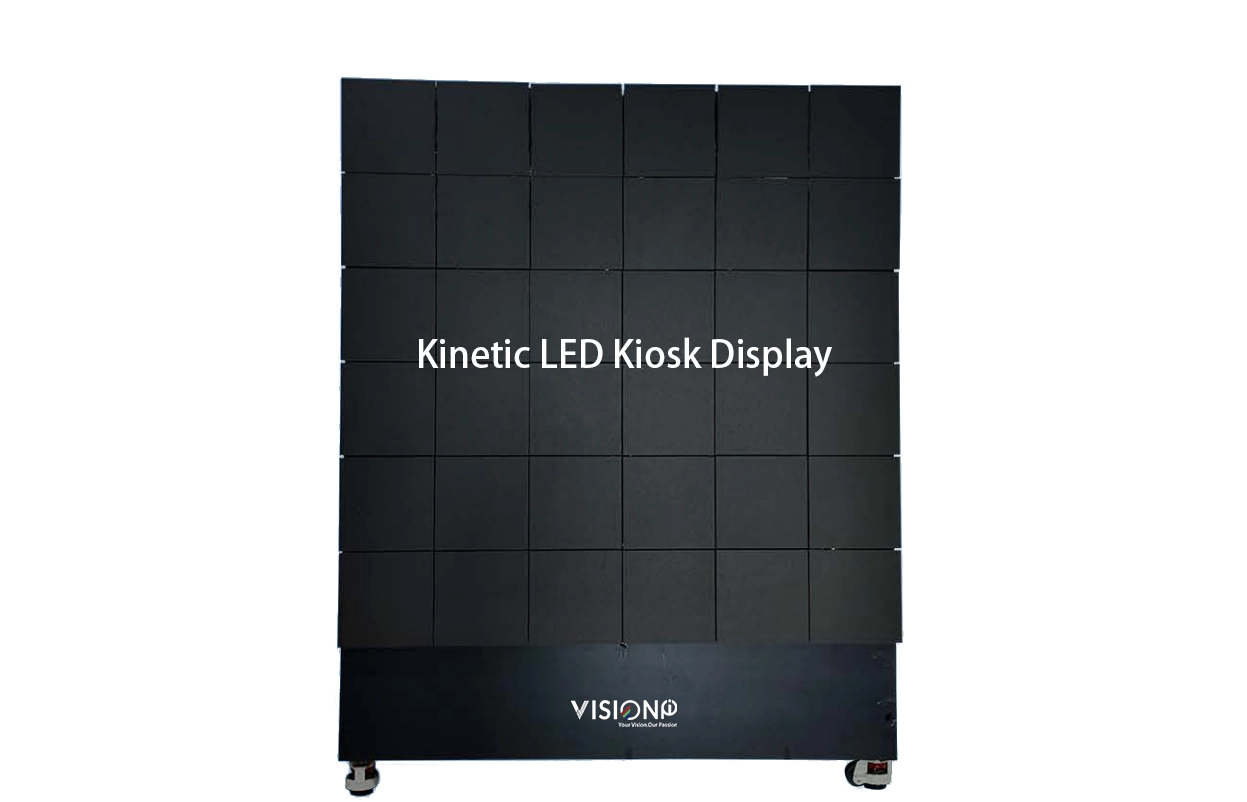
Key Features:
- Easy Operation & Maintenance: Intuitive to operate and maintain, minimizing downtime.
- High Stability: Built for consistent, reliable performance.
- Customizable Size: Supports flexible size configurations to meet unique display needs.
- Simple, Stable Design: Features a straightforward, durable construction.
- Real-Time Action Preview: Previews action scripts in real-time for smooth integration.
- Effortless Installation: Designed for quick setup and easy handling.
- Central Control: Supports central control calls for better management.
- Convenient Action Editing: Simple interface for editing action scripts.
Product Features:
- LED Display Integration: Combines with high-resolution, high-brightness, and high-contrast LED displays for clearer, more vibrant visuals.
- Automated Action Script Generation: Generates action scripts based on the movie’s frames, with simple editing and quick action additions (up to 10 actions per second).
- Modular Design: Each module consists of 6 units for easy installation and maintenance. Can be replaced as a whole or by individual units.
- Low Noise, High Precision: Uses a domestic brand stepper motor with synchronous belt transmission to reduce noise while ensuring precise movements.
- Adjustable Speed Control: Customizable acceleration and deceleration times to minimize device wear and enhance smooth motion.
Rental Kinetic LED Screen
Kinetic LED signage is transforming how viewers engage with content, combining traditional LED brilliance with dynamic kinetic art technology to create captivating 3D displays. This innovative signage solution adds movement, vibrant colors, and sound, offering an enhanced visual experience that is perfect for museums, hotel lobbies, galleries, and public spaces. Easy to install and transport, kinetic LED displays have become an ideal choice for events, exhibitions, and rentals, bringing art, advertising, and information to life like never before.

